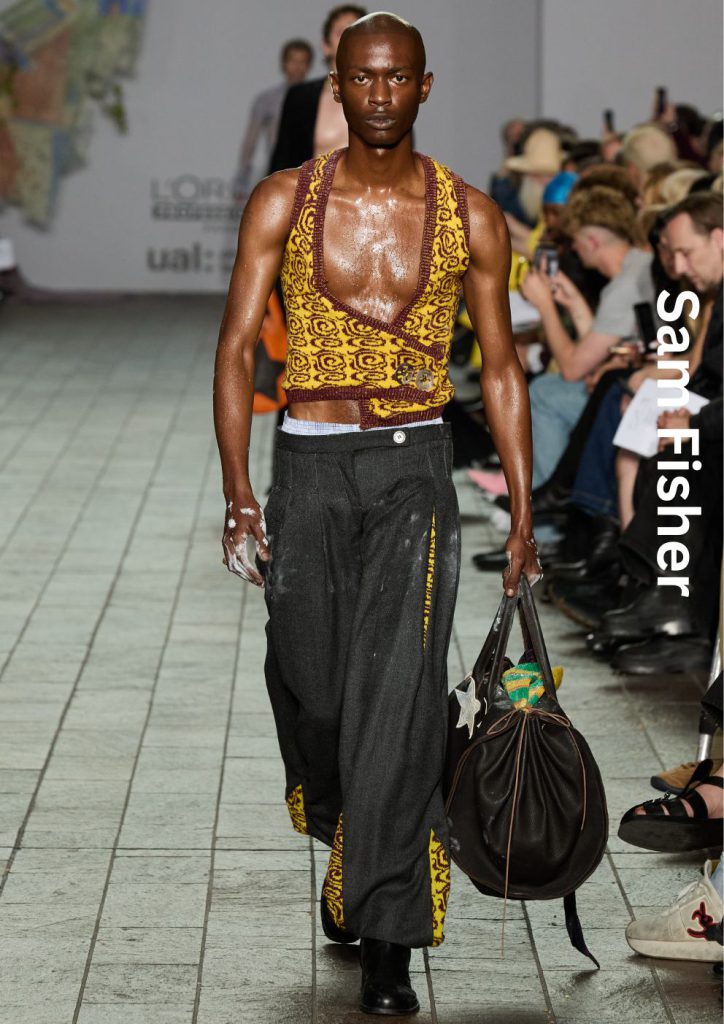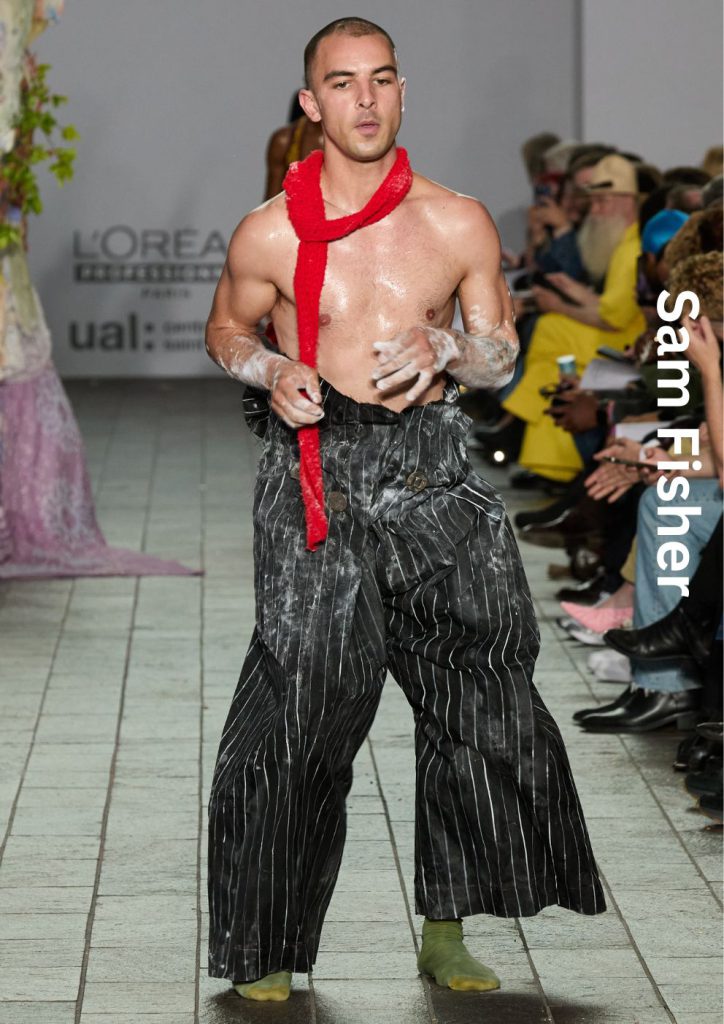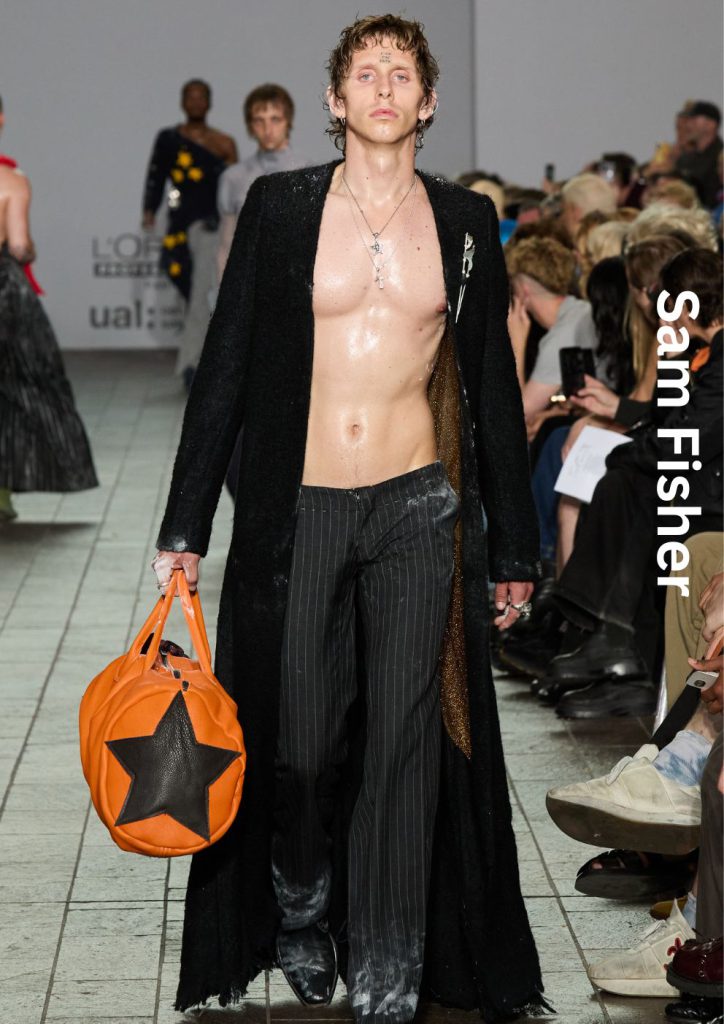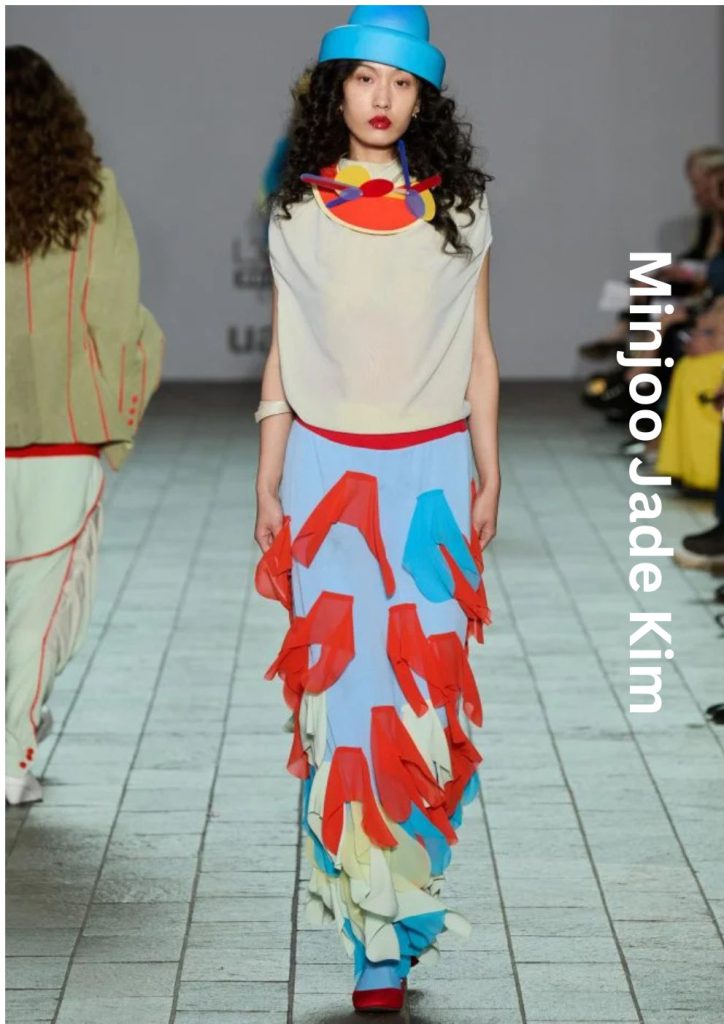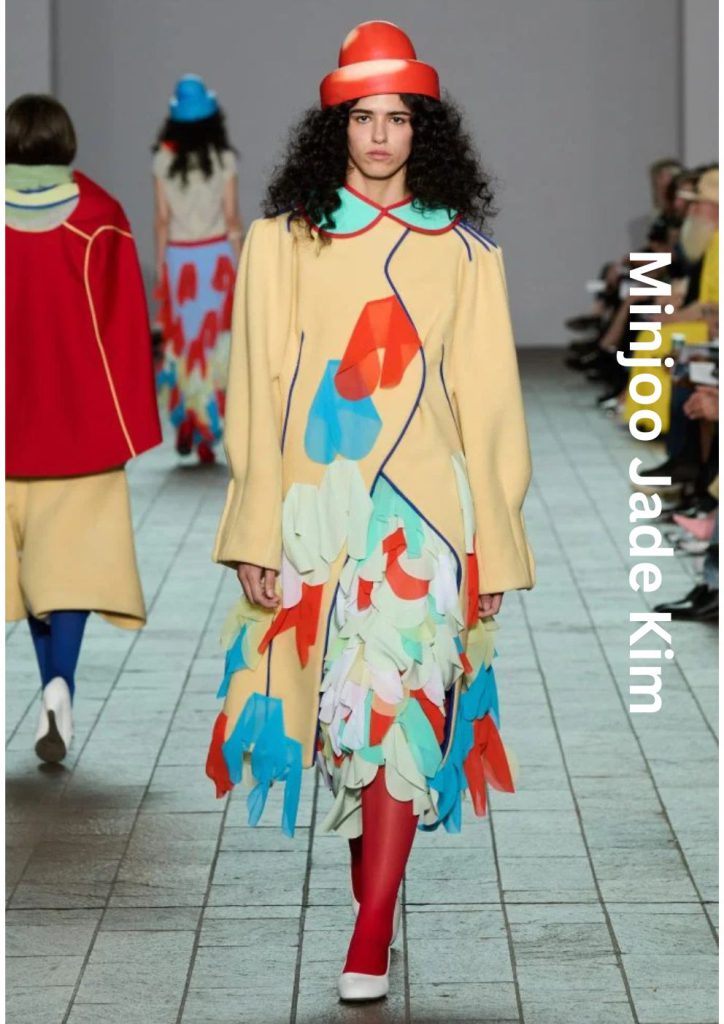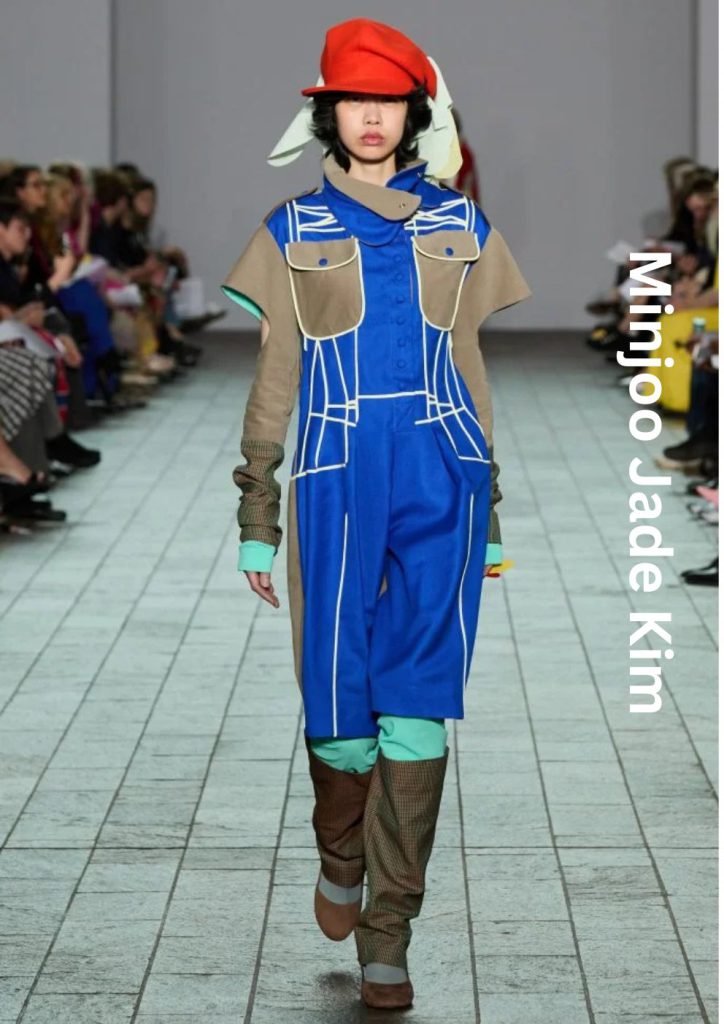I: Rebecca Maynes
The Central Saint Martins BA Fashion show was an explosion of creativity, shifting the limits and possibilities of human talent: the result of countless sleepless nights, crits and mountains of double shot lattes. These instances of concentrated creativity are rare, and the chance to witness and learn from this type of work is a privilege. From the Avant-Garde to the Commercial the students showed why CSM is still one of the best fashion institutes in the world.
ASBO favourite Matthew Davide Andrews was the walk away star at this years CSM show – the new enfant terrible of British fashion is like a tsunamis wiping out all before him and leaving a trail of fresh new ideas and originality, that the London Fashion scene desperately needs.
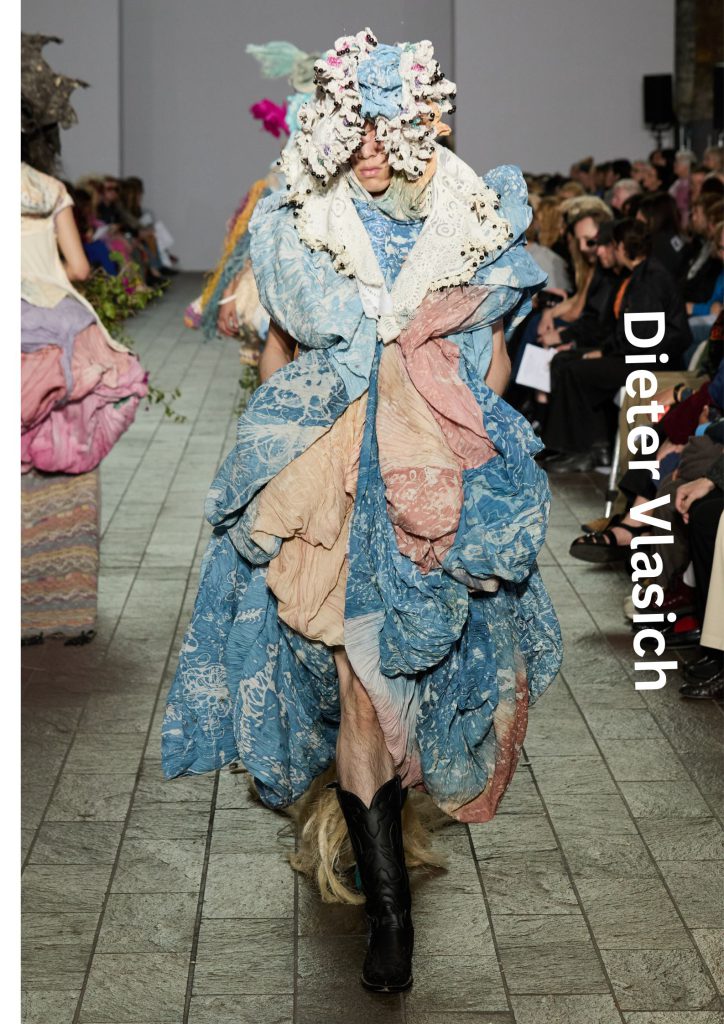
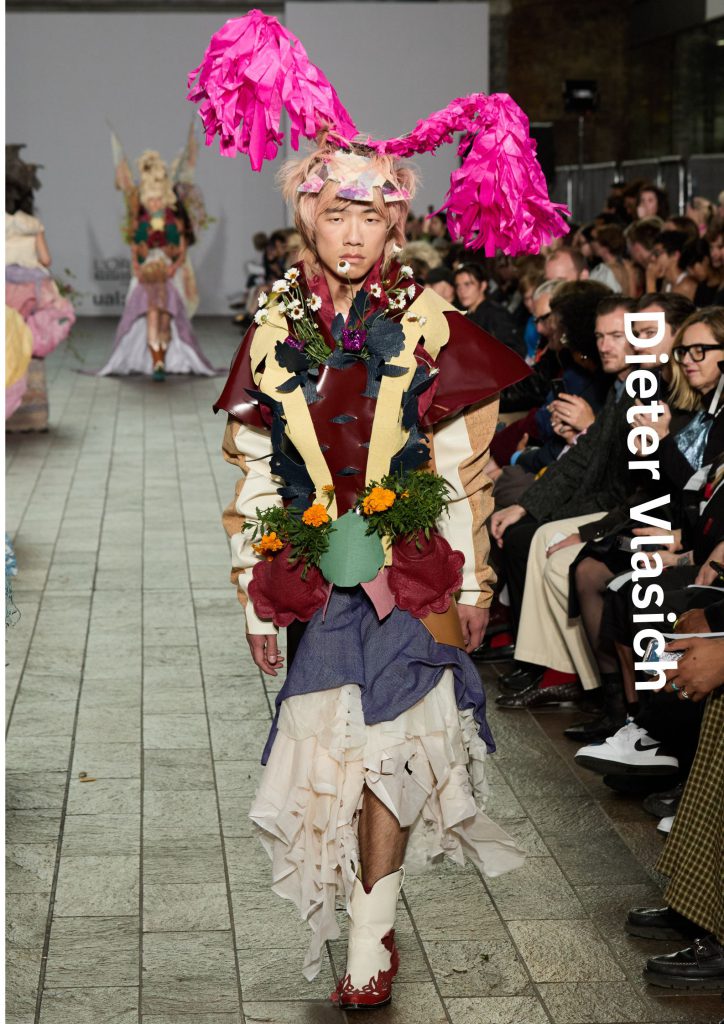
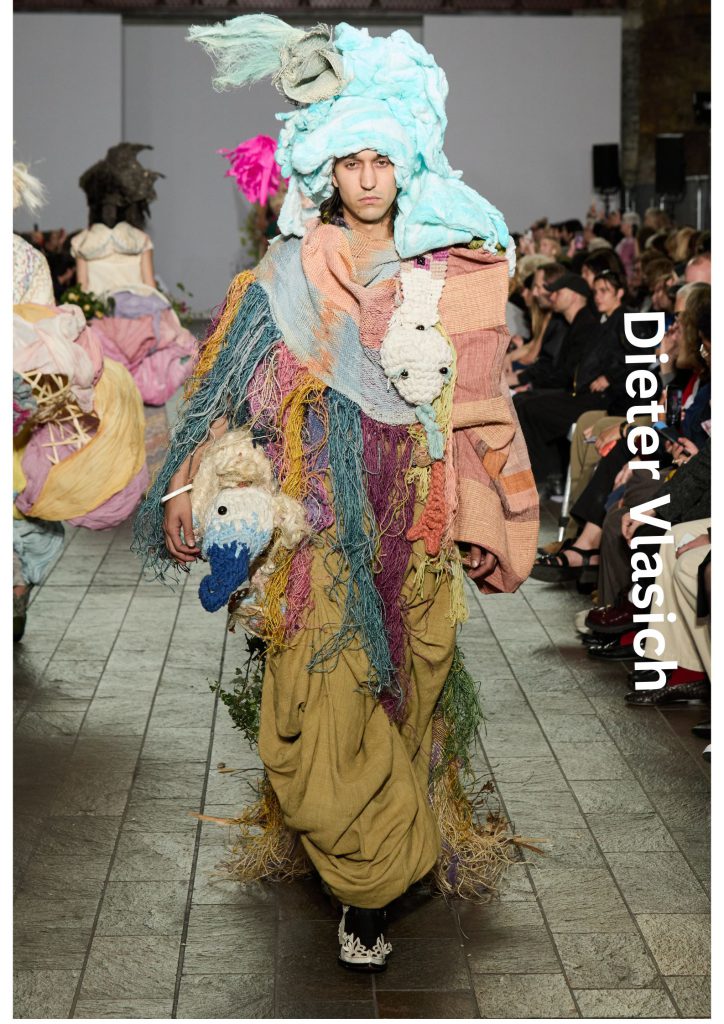
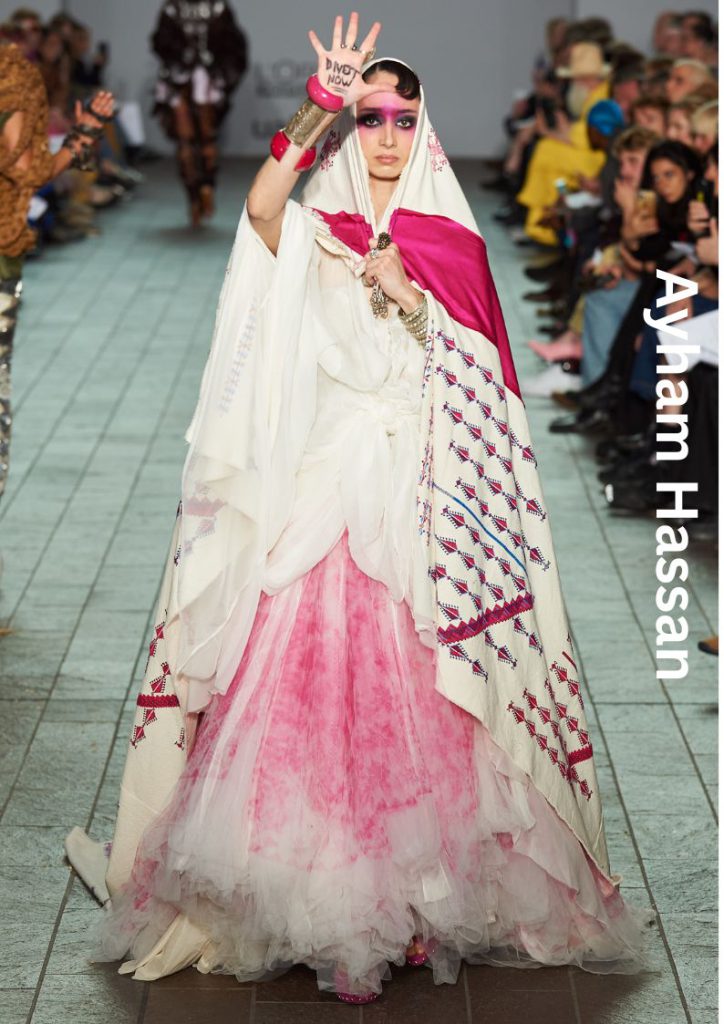
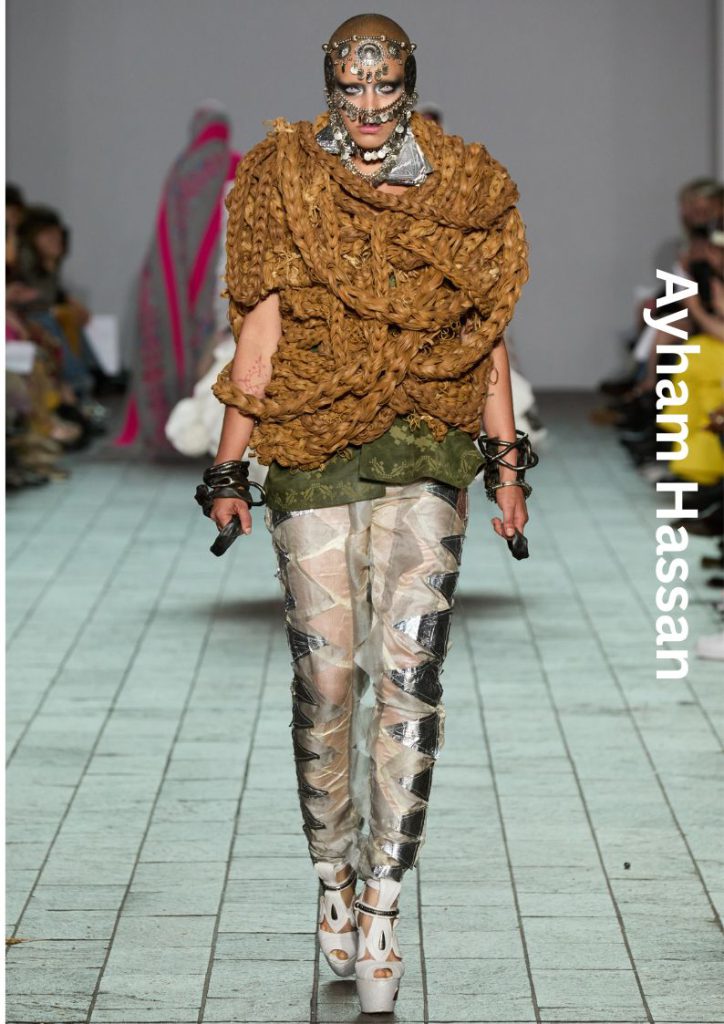
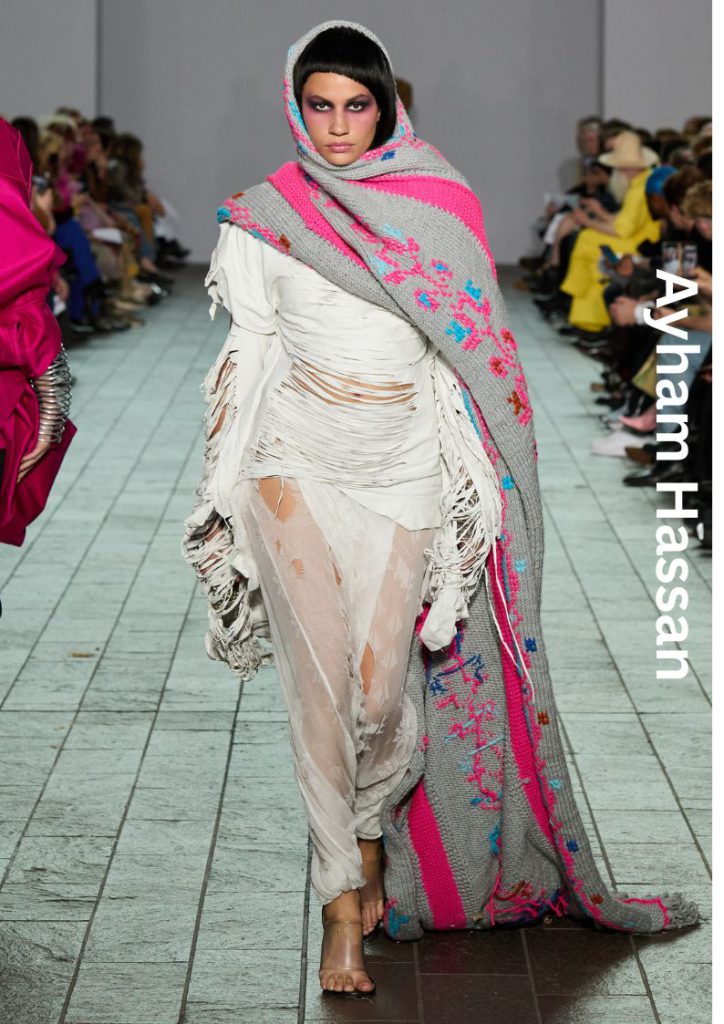
MATTHEW DAVID ANDREWS: I was initially inspired by photographs of a real flood that occurred in my hometown of Wickford in 1958. I used this devastating event as a metaphor for growing up queer — drowning in fear of revealing my true self. A newspaper clipping from the community archive inspired the collection’s name and direction, reimagining the flood through a fantastical lens. The Venice of Essex conjured visions of Venetian Carnevale, and vintage images of the Wickford Carnival helped build a narrative that retells the flood story as if it unfolded on the day of the town’s carnival.
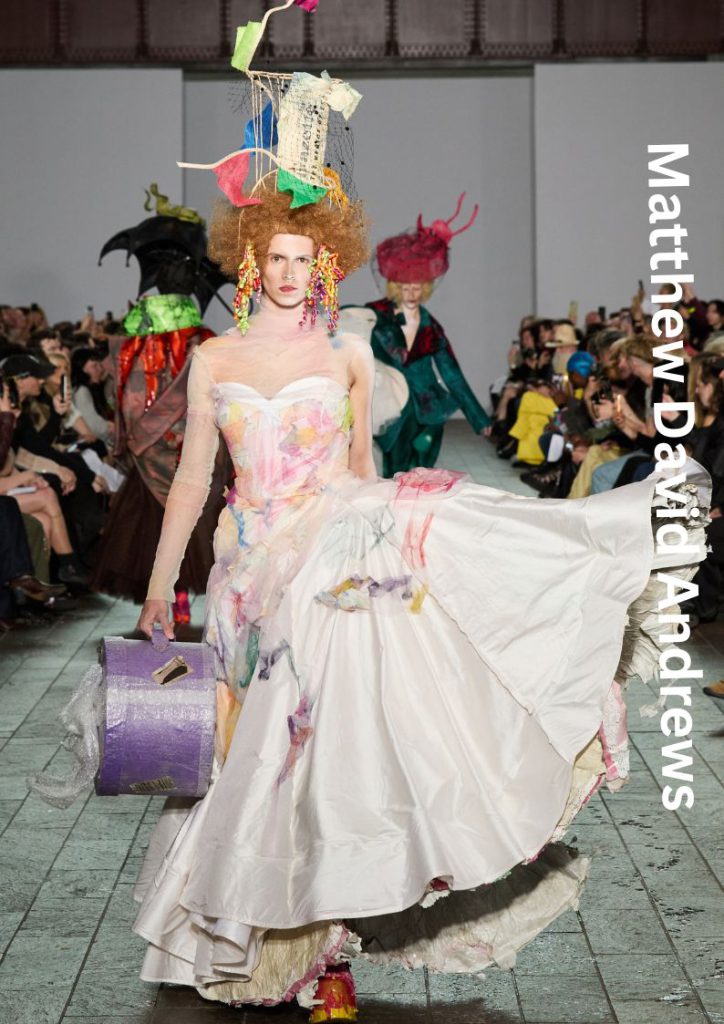

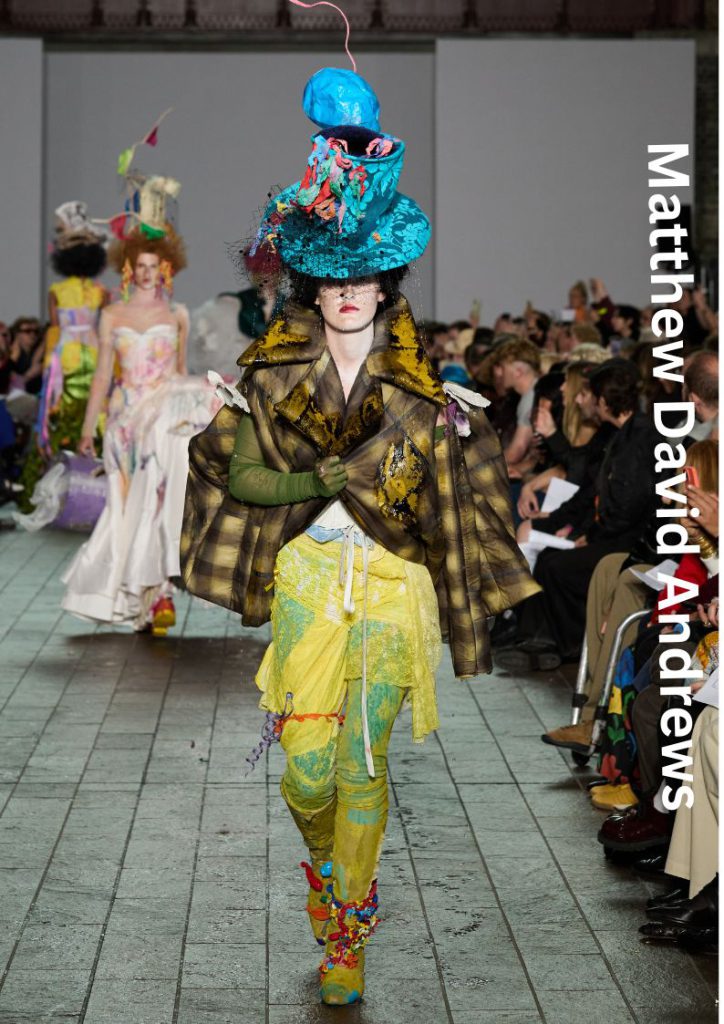
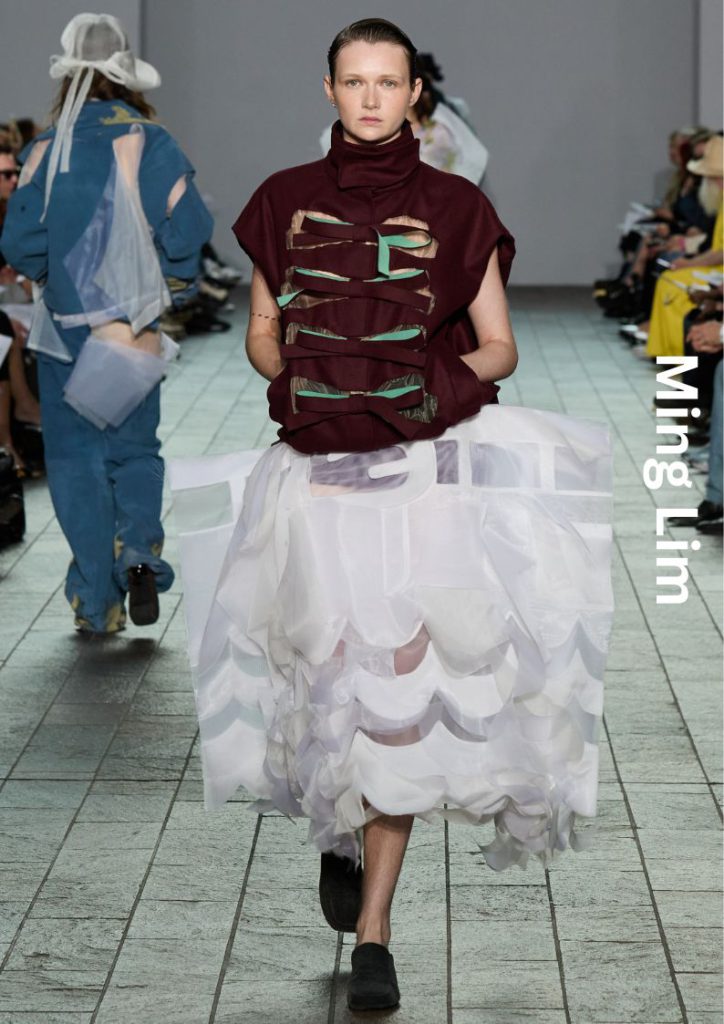
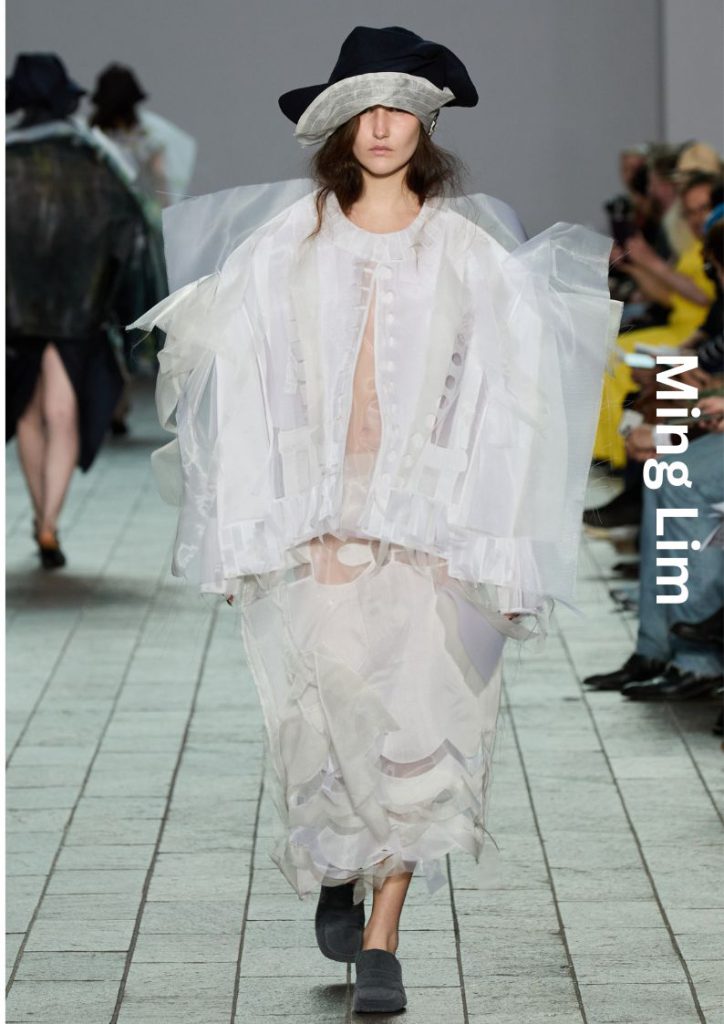
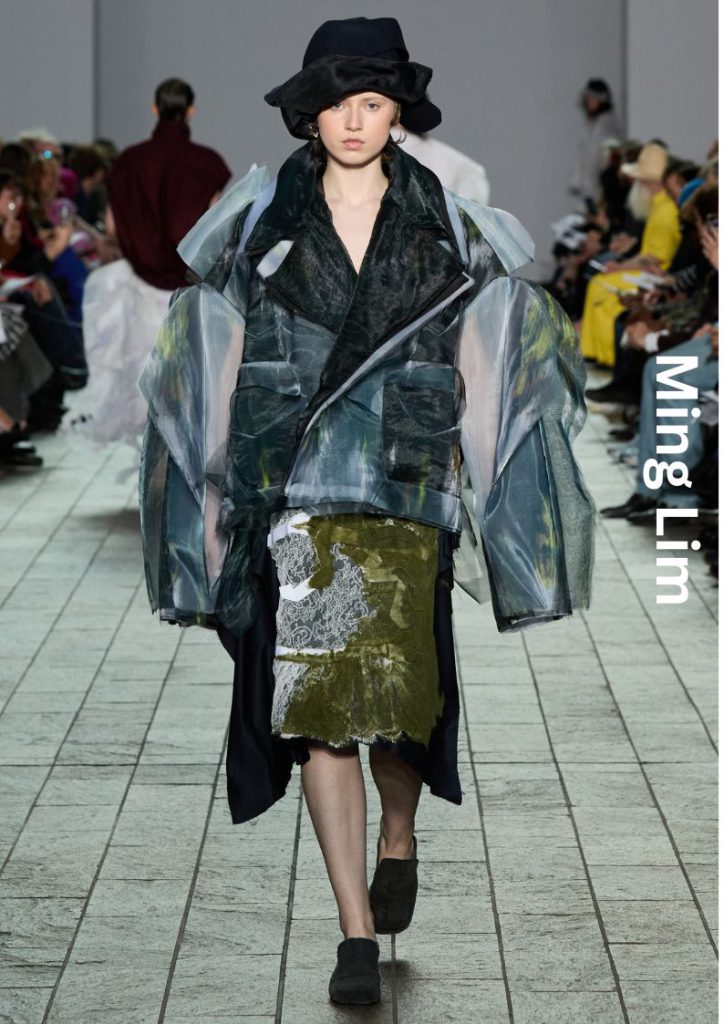
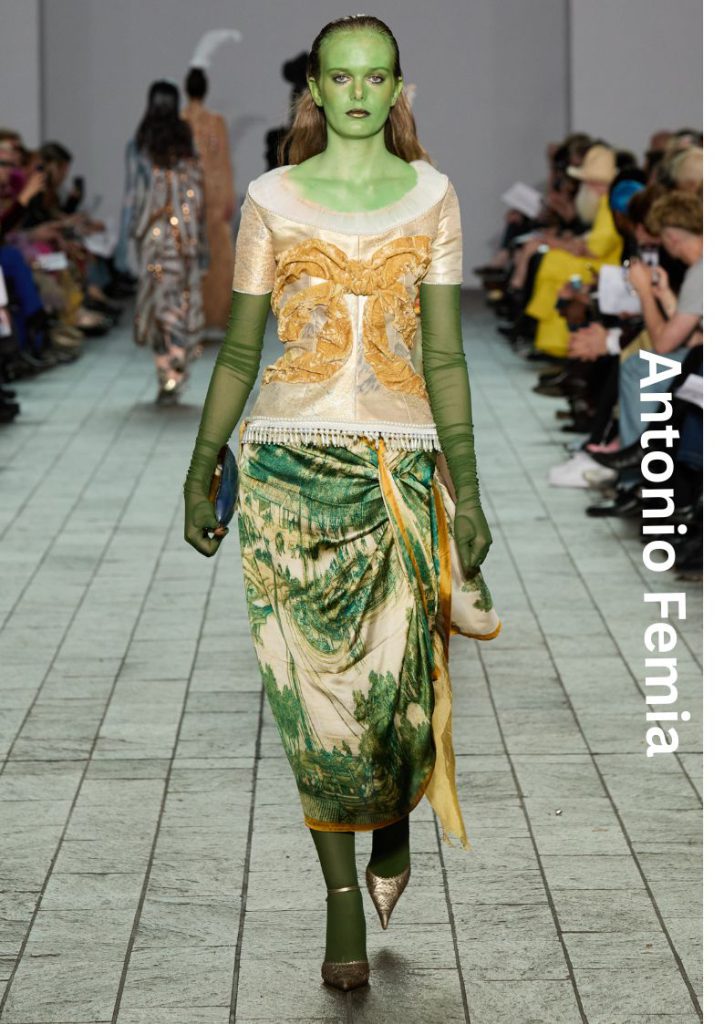
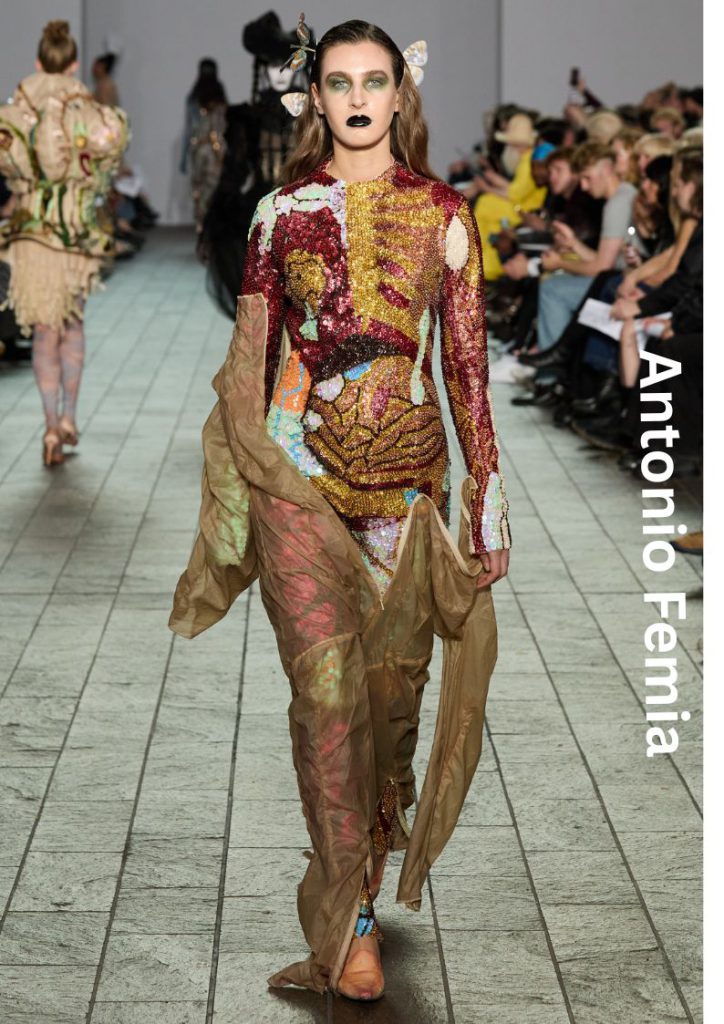
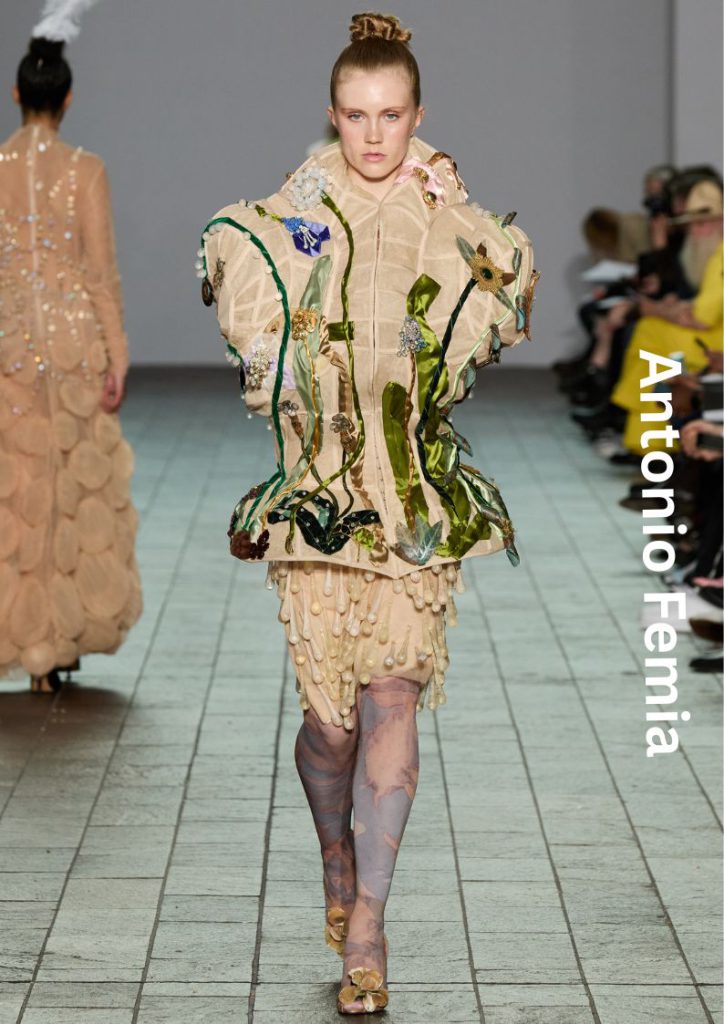
LUCAS LIBBY: SATOR is inspired by my childhood in rural Provence, where nature and regional heritage shaped my creative worldview. Growing up queer in a traditional, conservative setting meant navigating rigid gender norms while forging a queer identity outside urban narratives. This collection reimagines agricultural attire through refined silhouettes and details that honour the overlooked richness of rural queer life. It challenges commercialised queer aesthetics and proposes a nature-rooted, inclusive utopia. SATOR is both a visual expression and a manifesto – amplifying rural queer voices and calling for broader LGBTQIA+ visibility beyond city spaces.
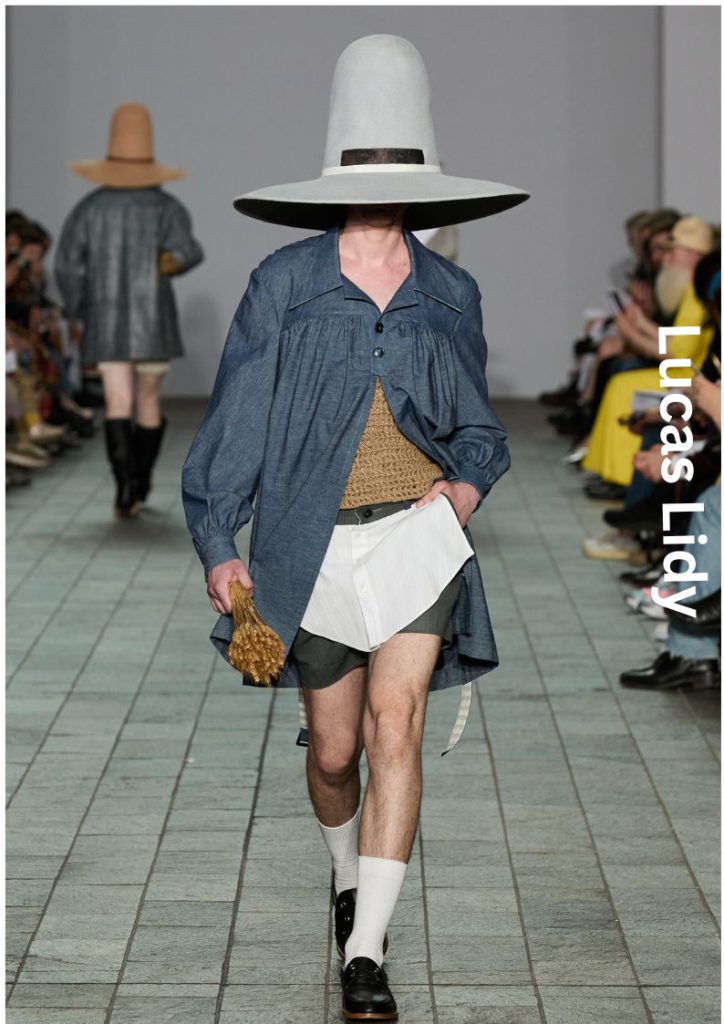
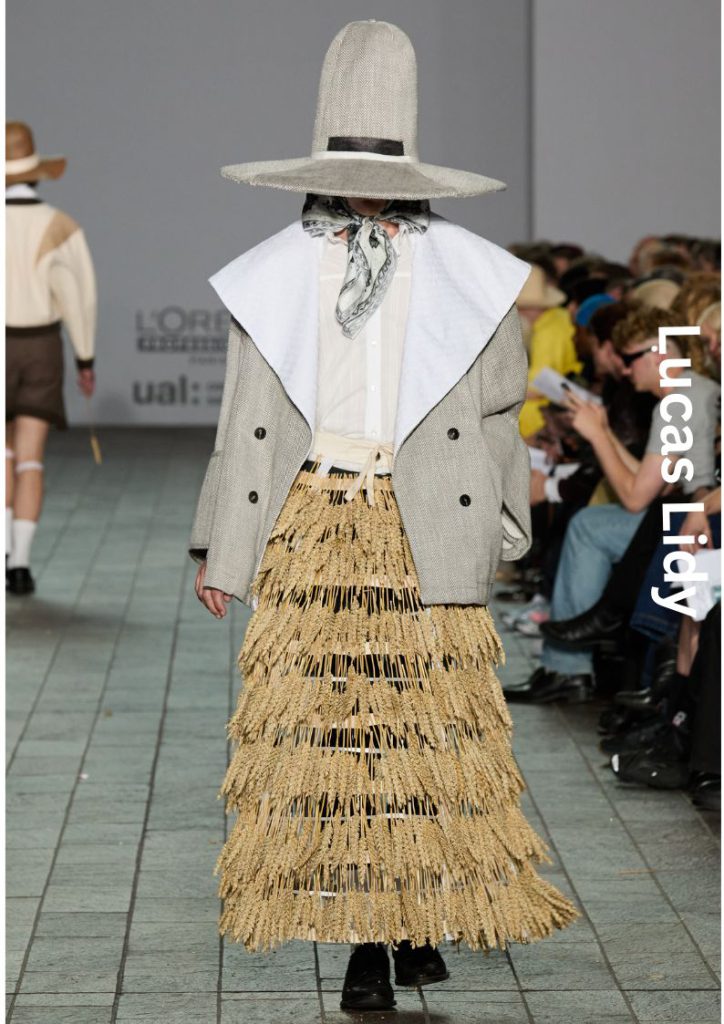
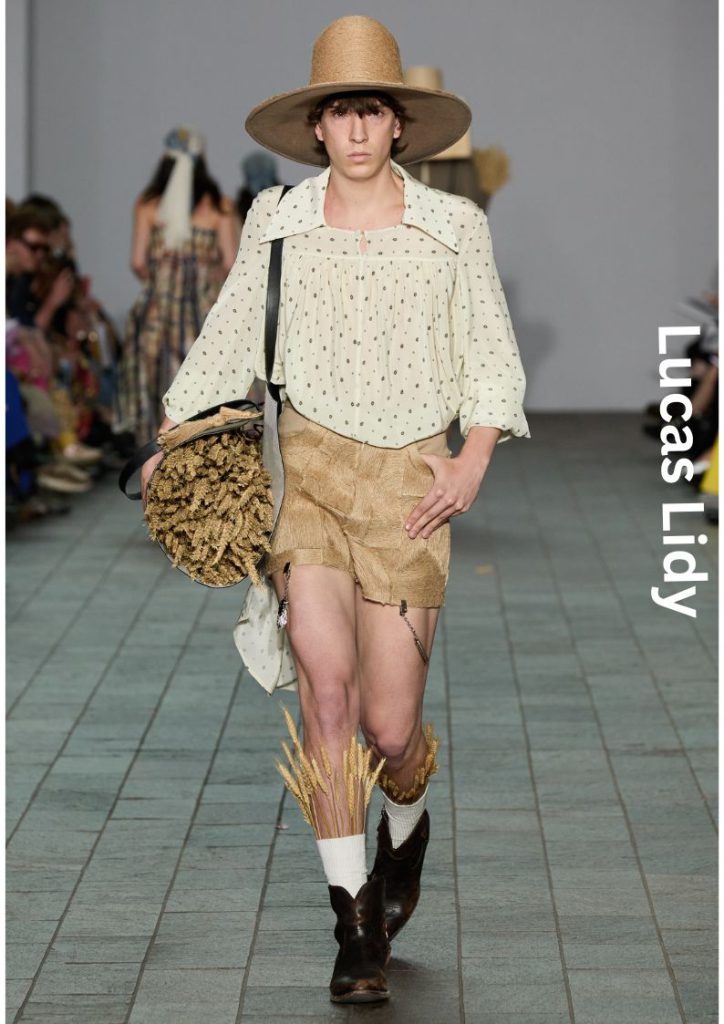
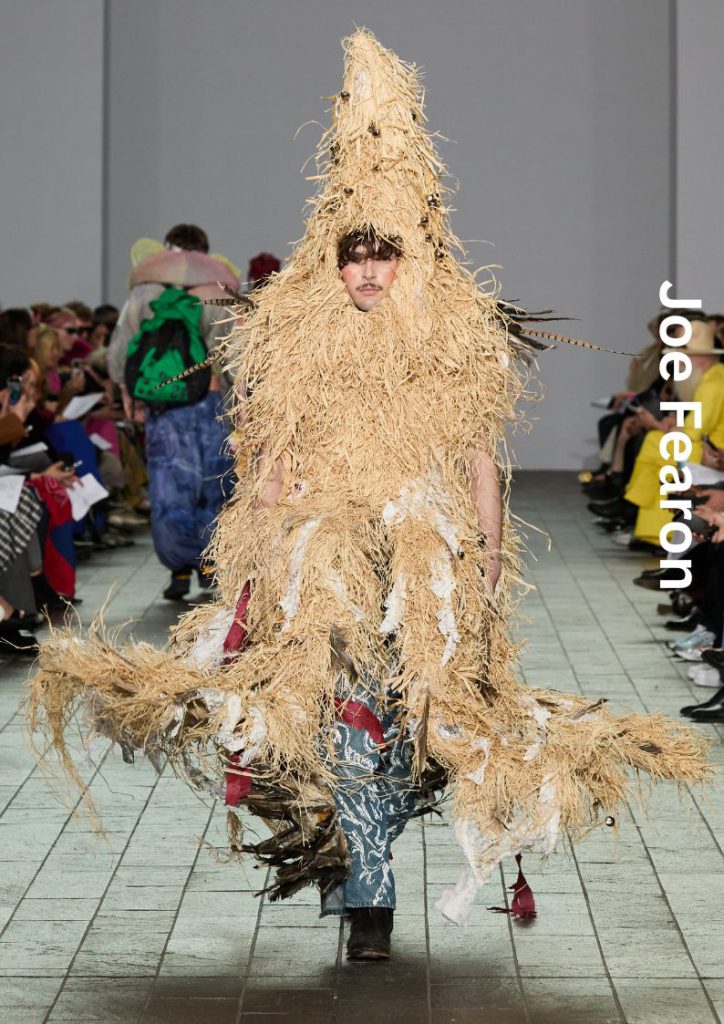
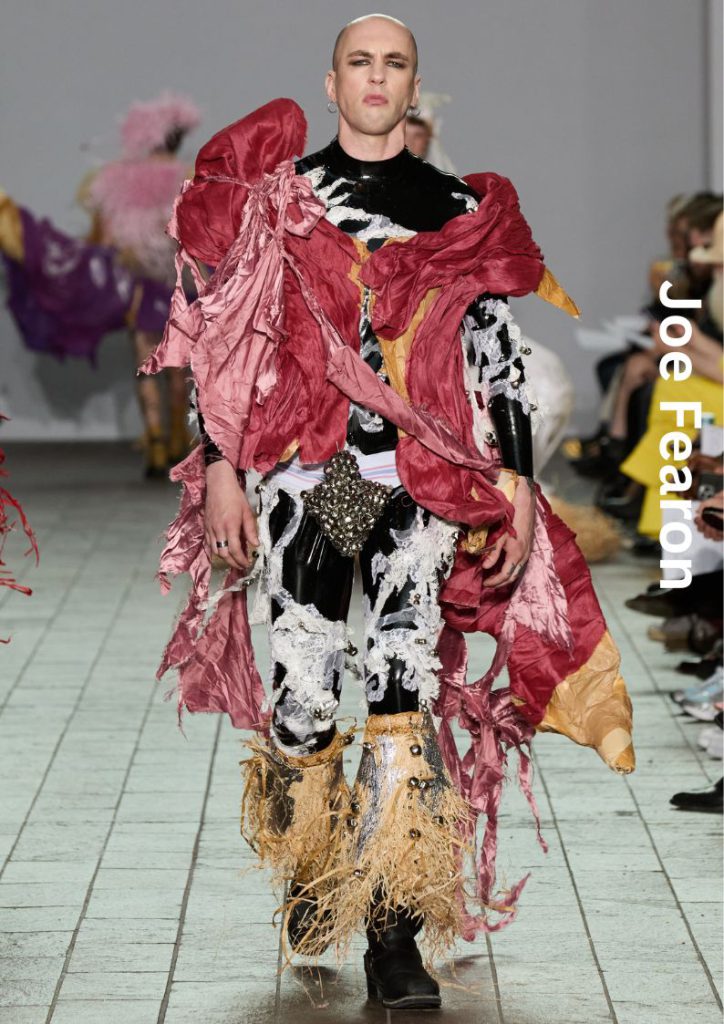
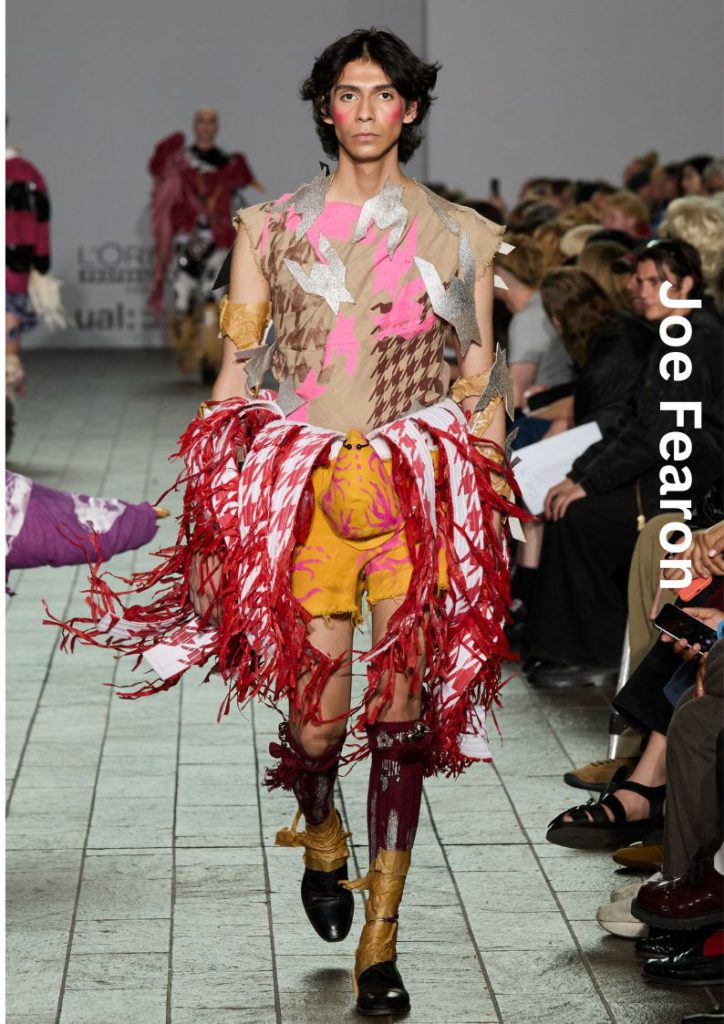
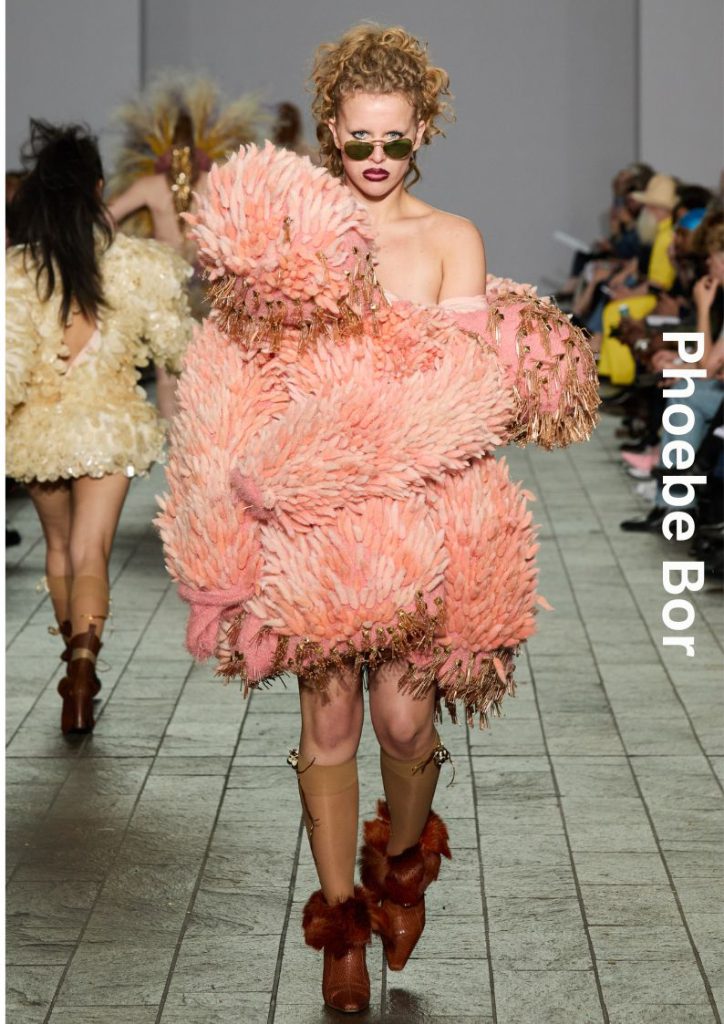
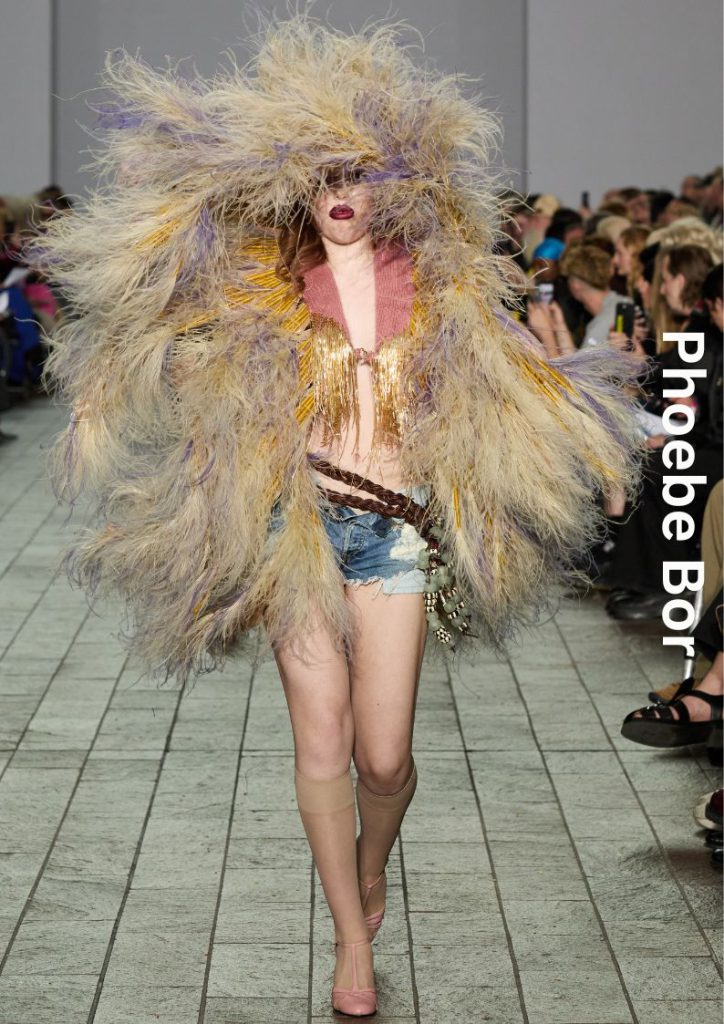
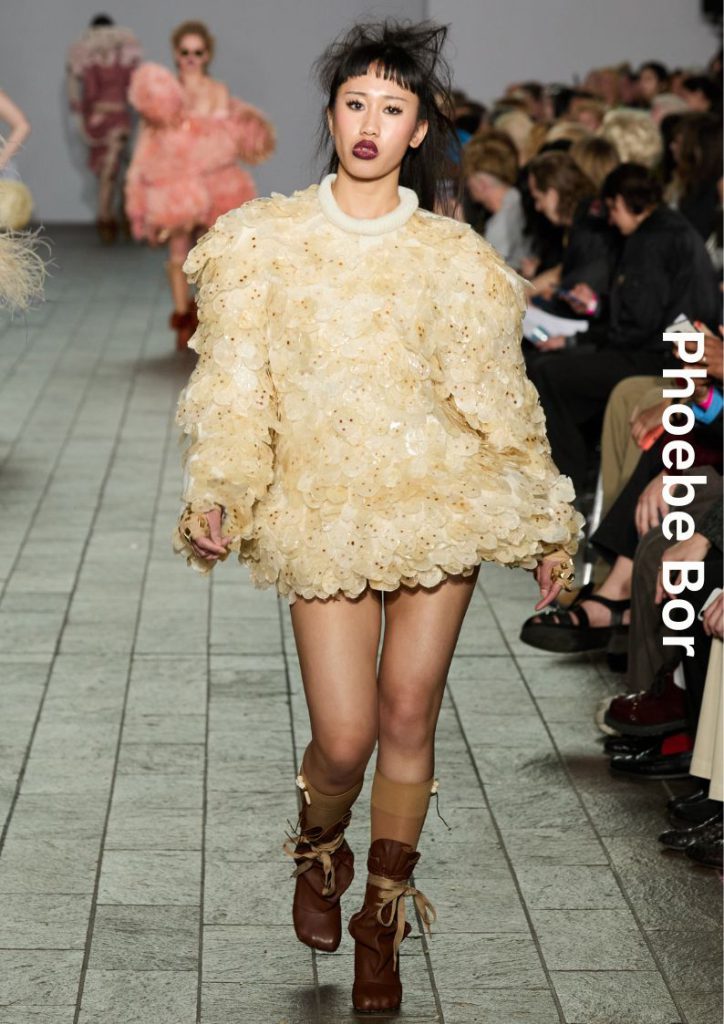
RUFUS SEAGRIM: The journey began with dots and workwear, took a detour through Studio 54, and circled back to my formative crush on Mr Tumnus from Narnia. In the end, I just wanted to make clothes I already own – reimagined in prints I really love. My main goal was to avoid the “sad clown” trap: when someone sets out to make joyful clothes but is quietly miserable, and it shows. I tried to stay lighthearted throughout, and I think that energy carried through. After the show, my family said the collection felt like walking into my bedroom – which, mostly, made me very happy.
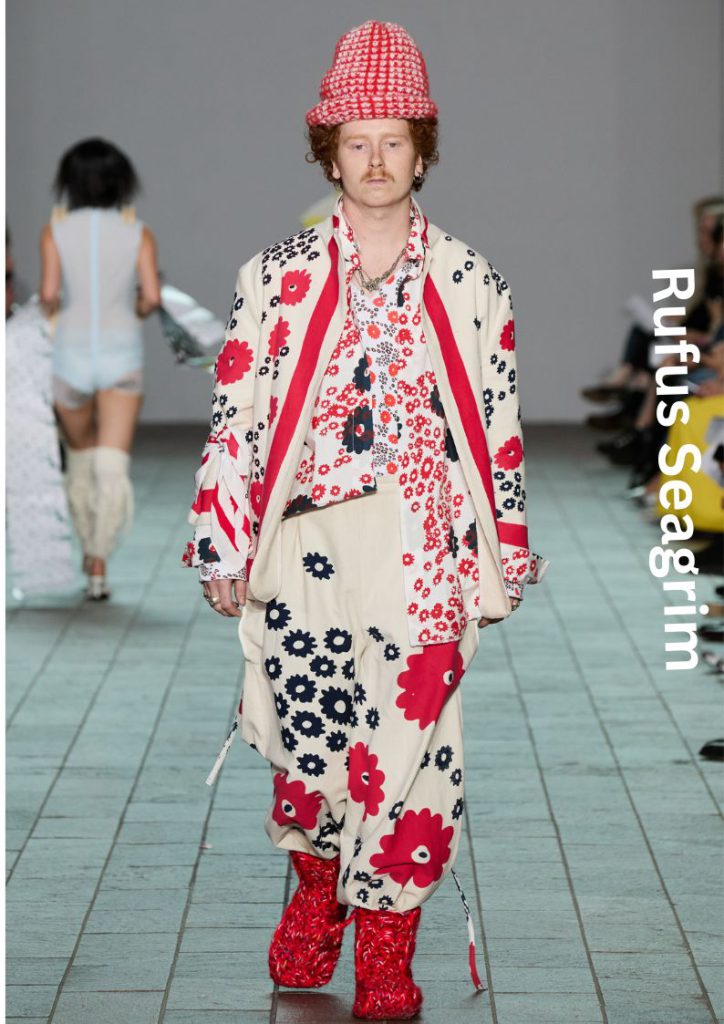
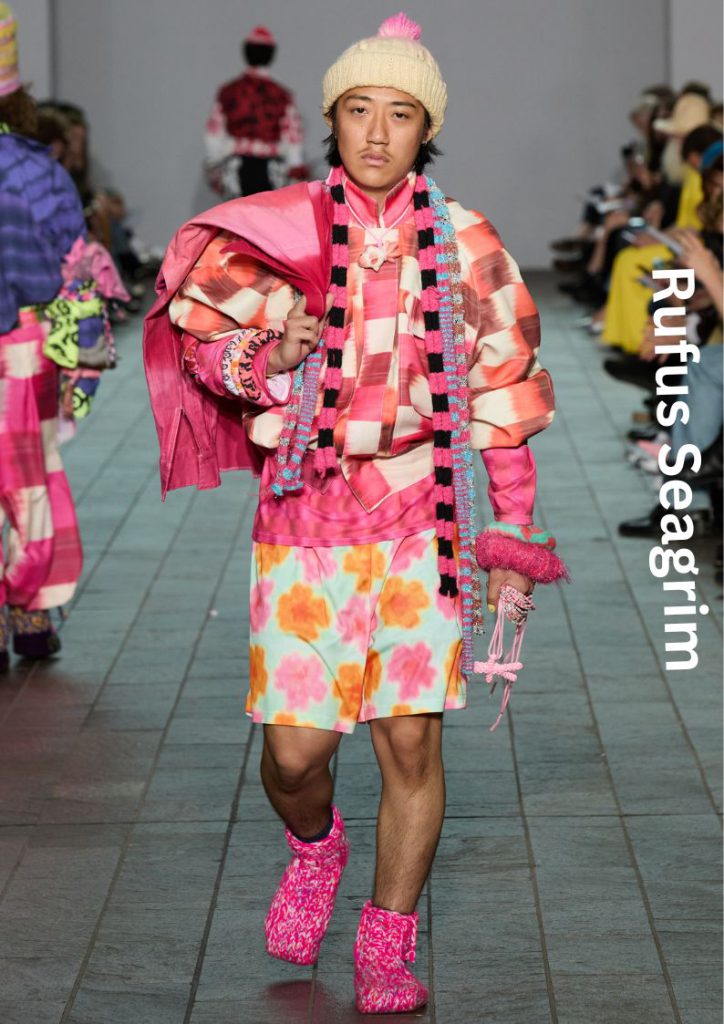
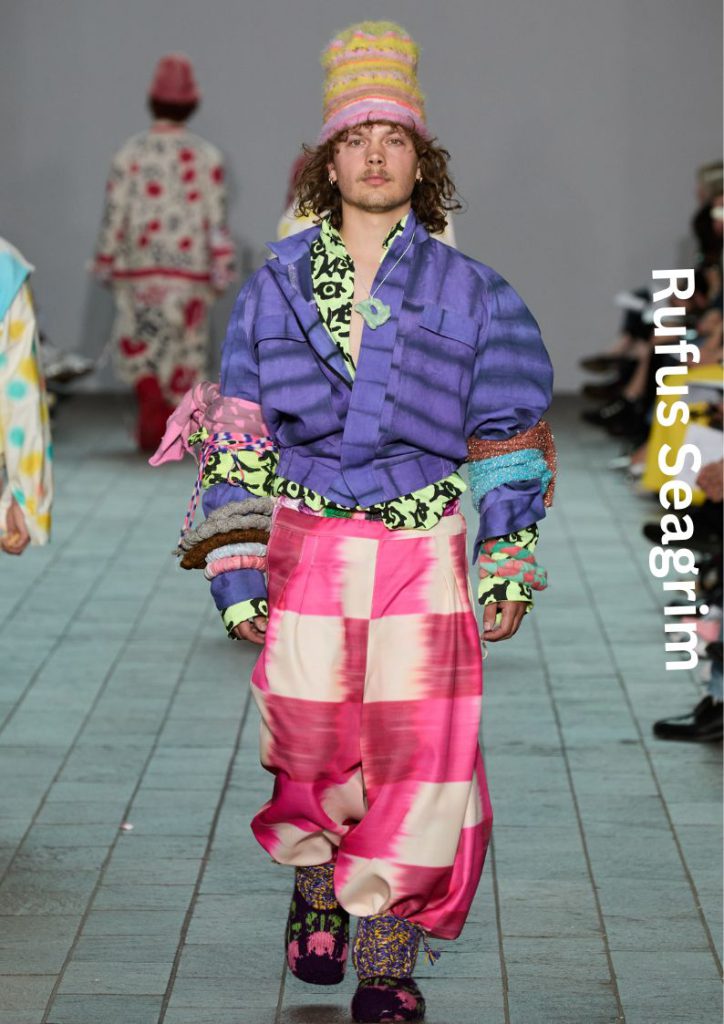
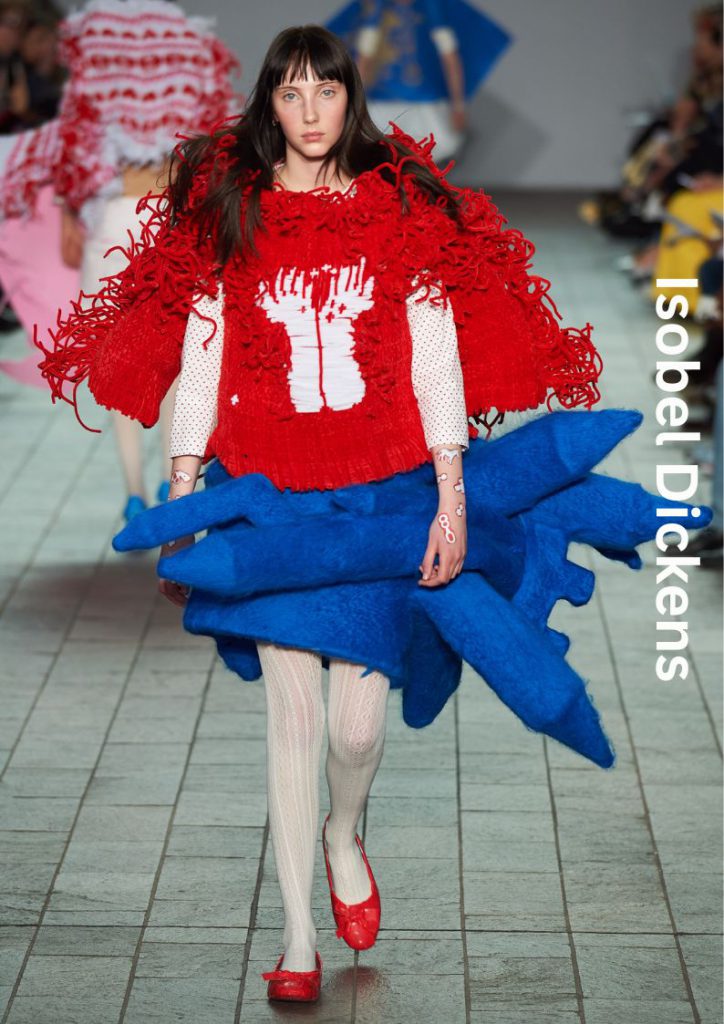
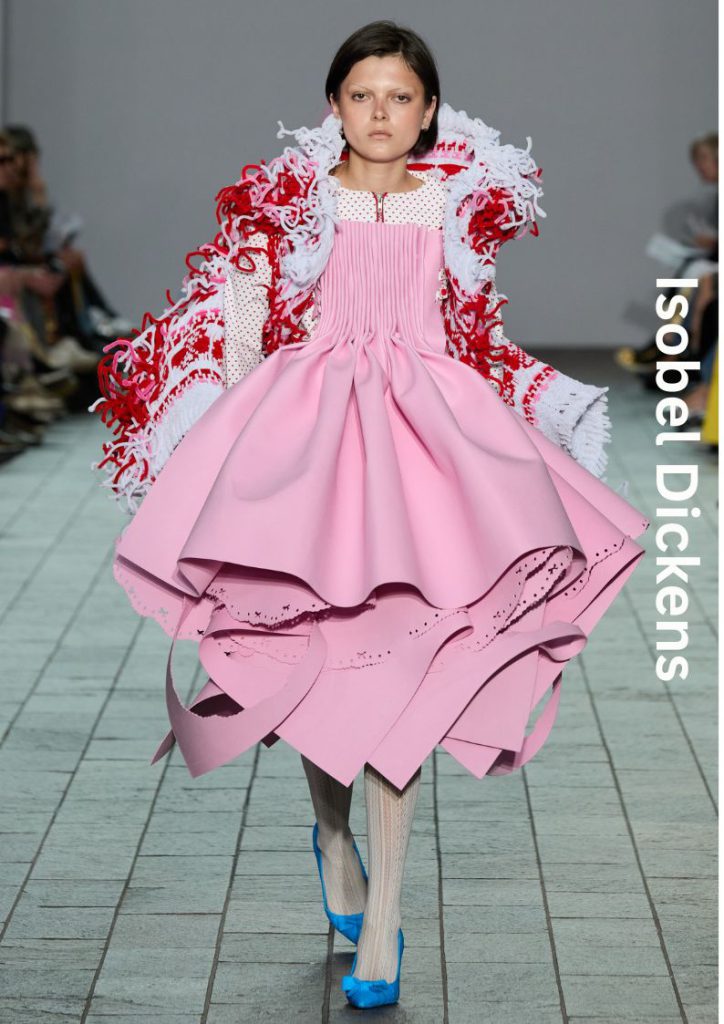
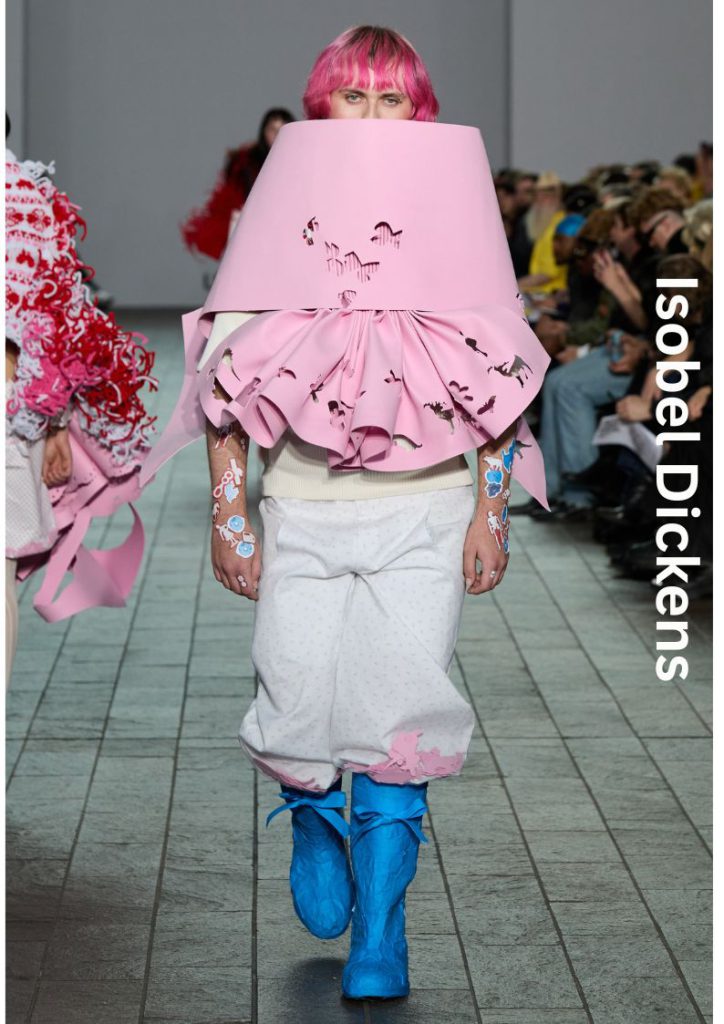
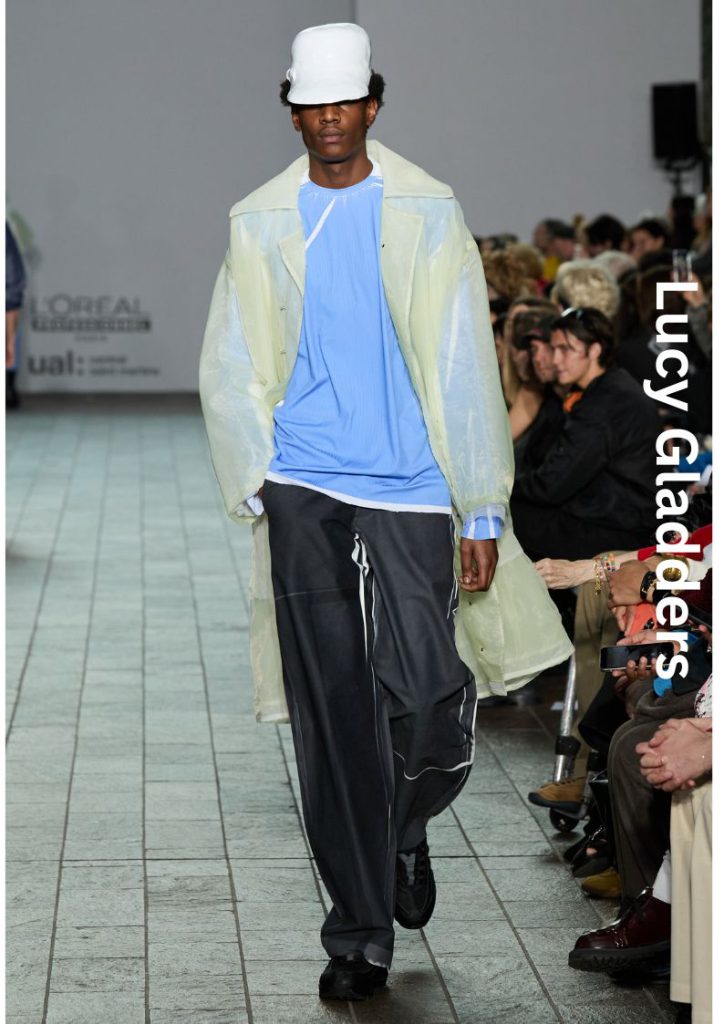
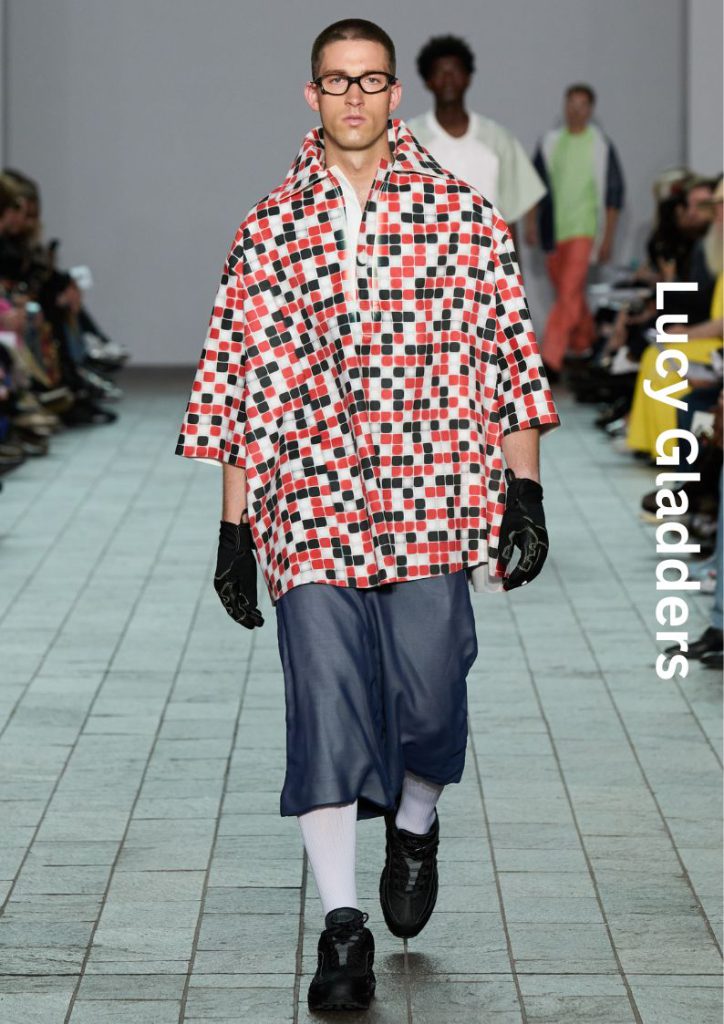
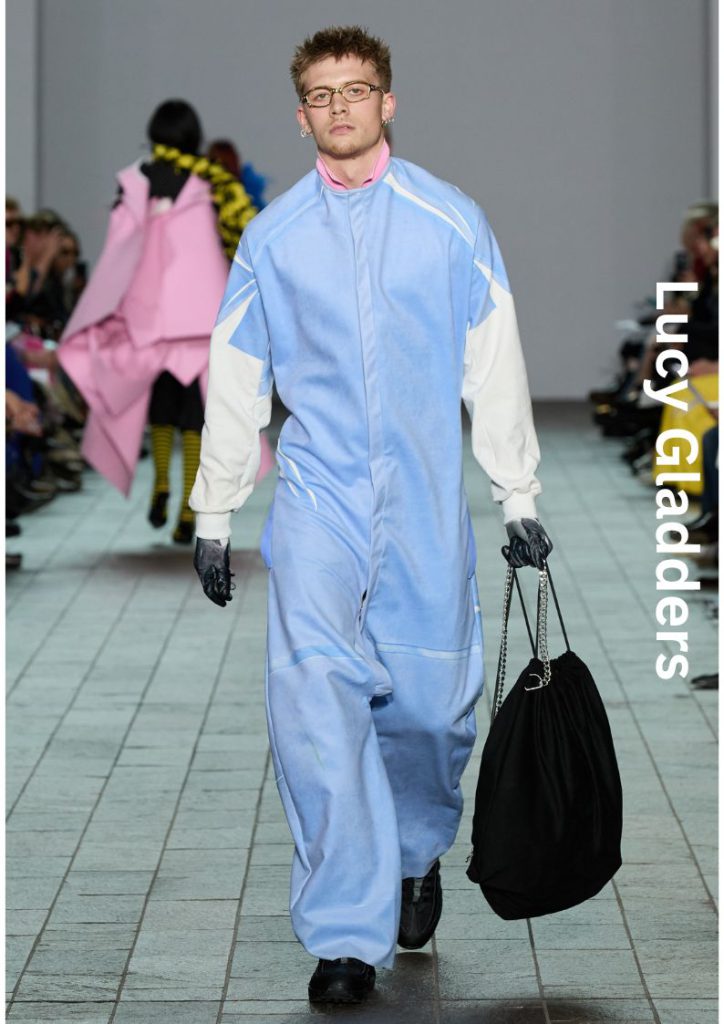
LUKE HEMINGWAY: This collection starts and ends with my mates back home. The garments were made with and for them – threaded with narratives that reflect and elevate their authentic character. Dream Ceremony explores the collapse of subculture, North Western identity, and ideas of authenticity. It draws on the strange undercurrent of nostalgia and performance, haunted by half-remembered, half-invented figures like Pudsey, Frank Sidebottom, and tribute bands. It’s about lads caught between myth and mundanity, ceremony and collapse – navigating a world where the extraordinary and the everyday blur.
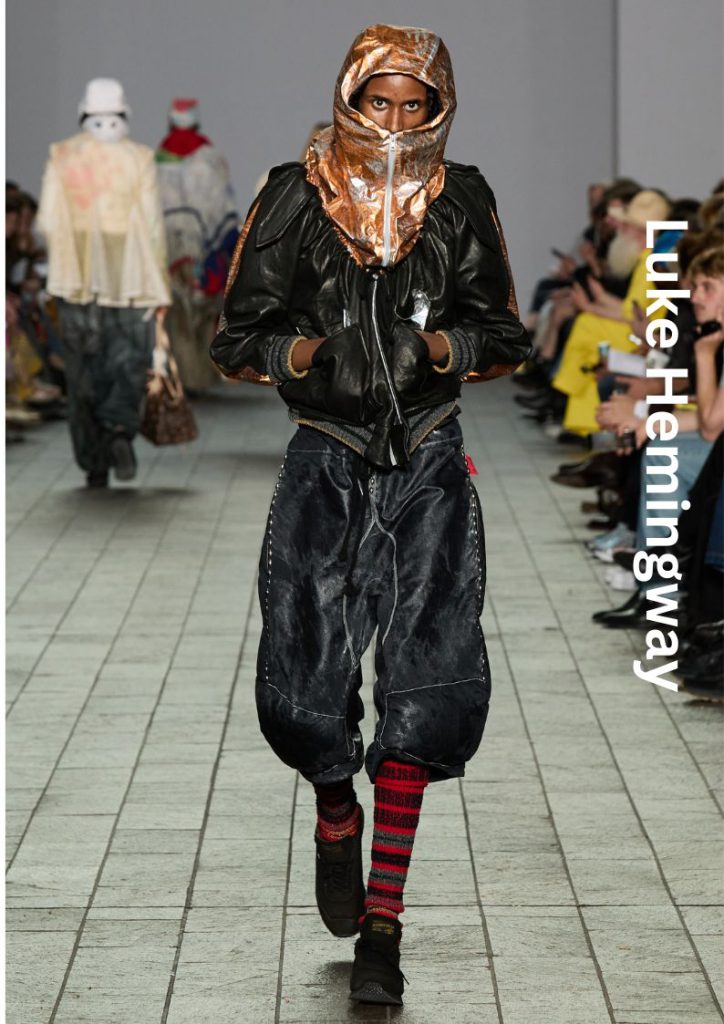
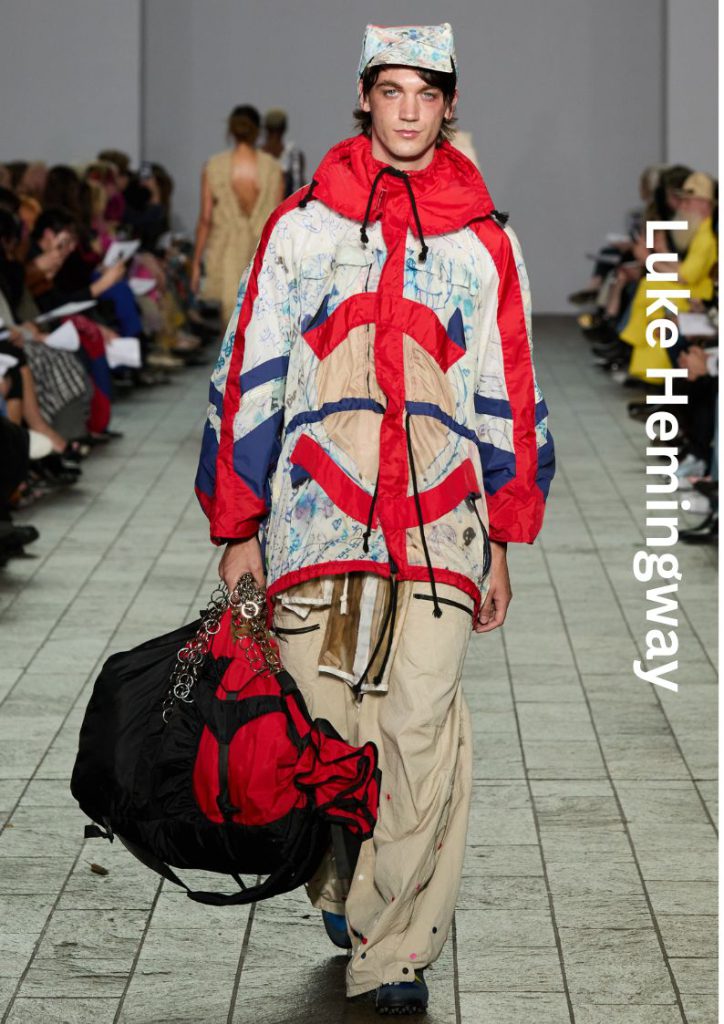
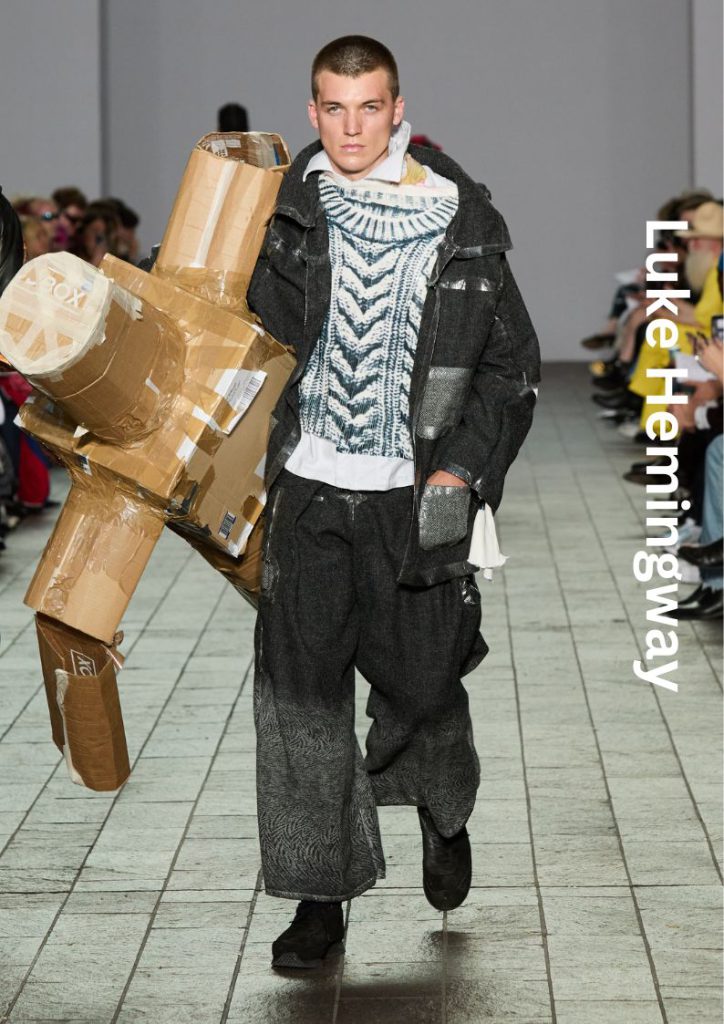
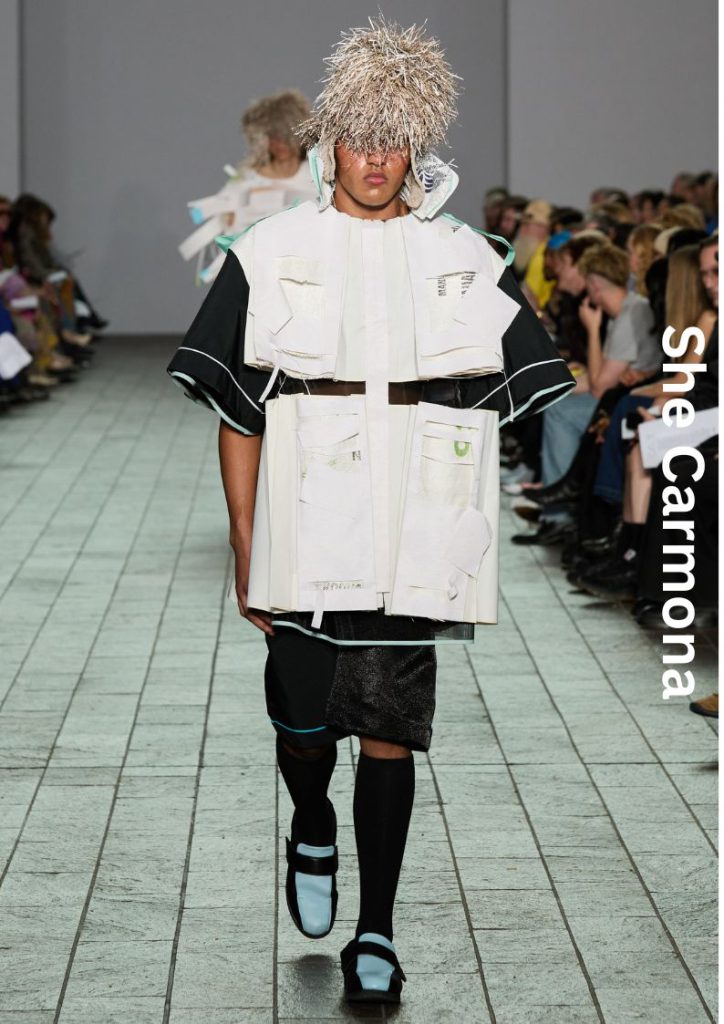
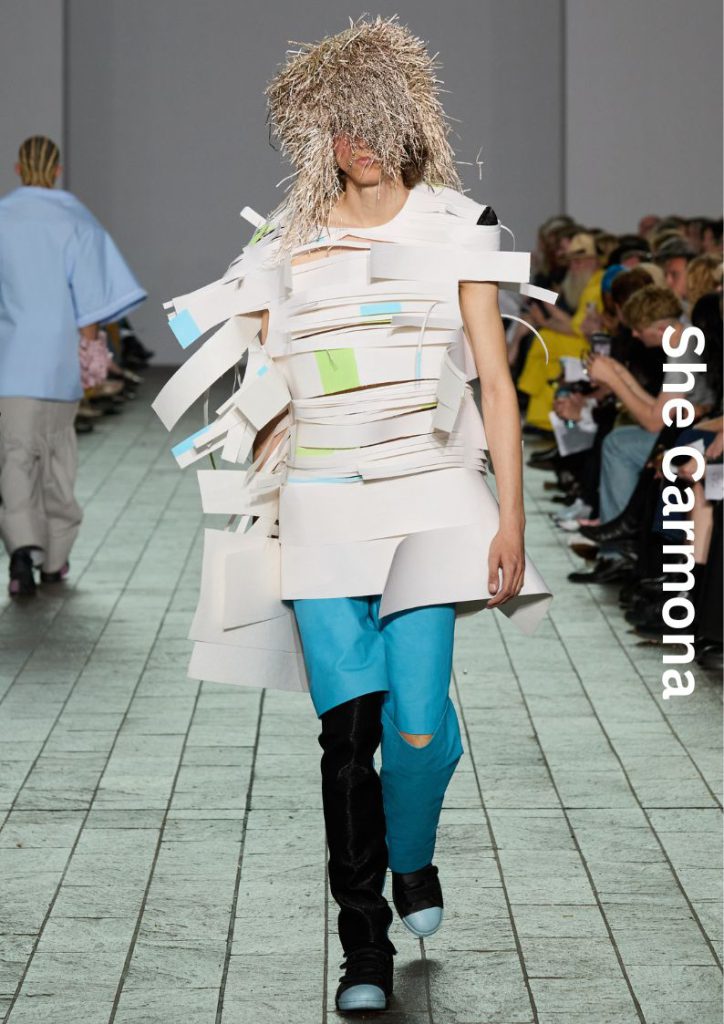

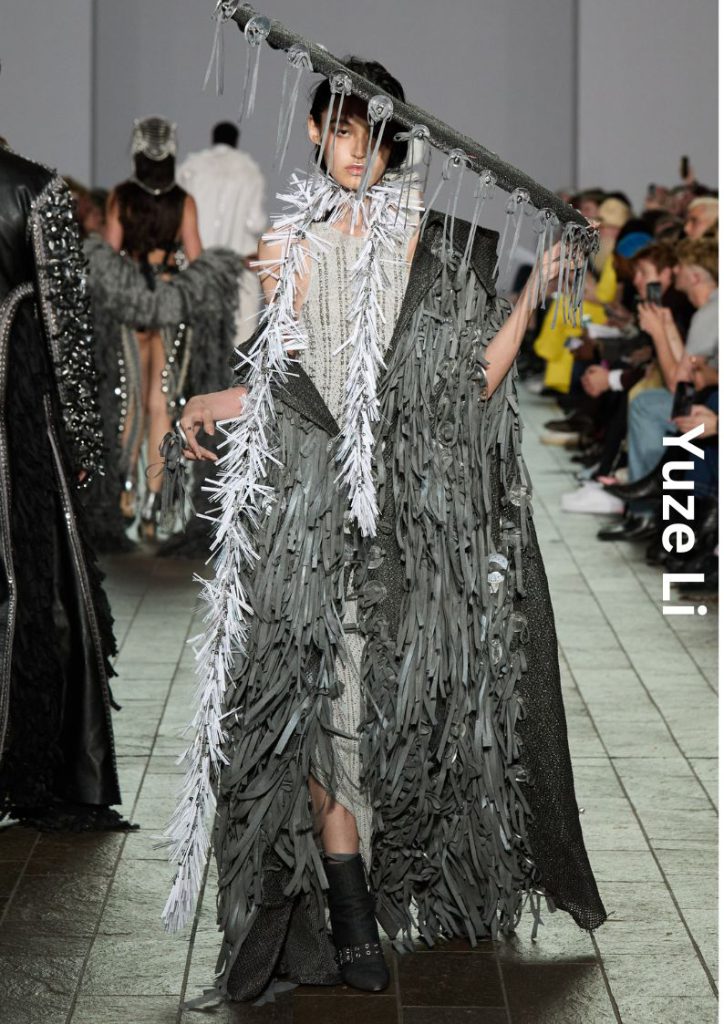
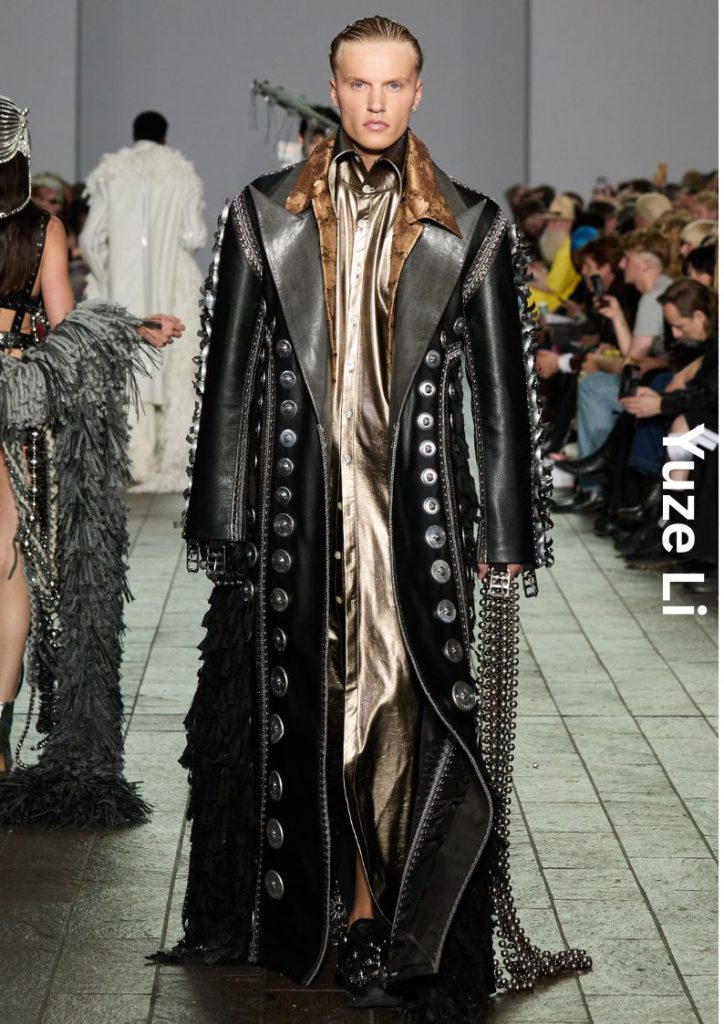
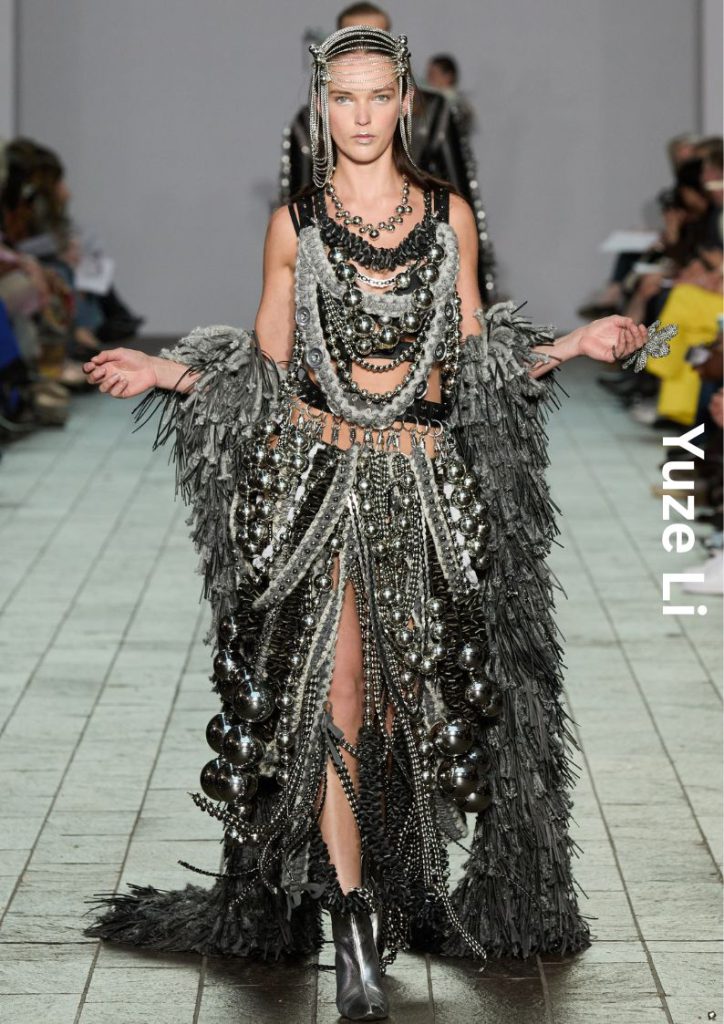
MARIE SCHULZE: This collection began with reflections on my time working in the German Parliament before coming to CSM. I was struck by the women there – dressed in eerie, hyper-tailored suits that were shiny, bright, and often considered “improper.” There was no clear uniform, yet their presence was commanding. I became fascinated by how clothing could become a code for female power – how a single woman in a room of nine men could hold the space. The collection captures that dynamic: a disruption, an assertion, and a quiet dominance through dress.
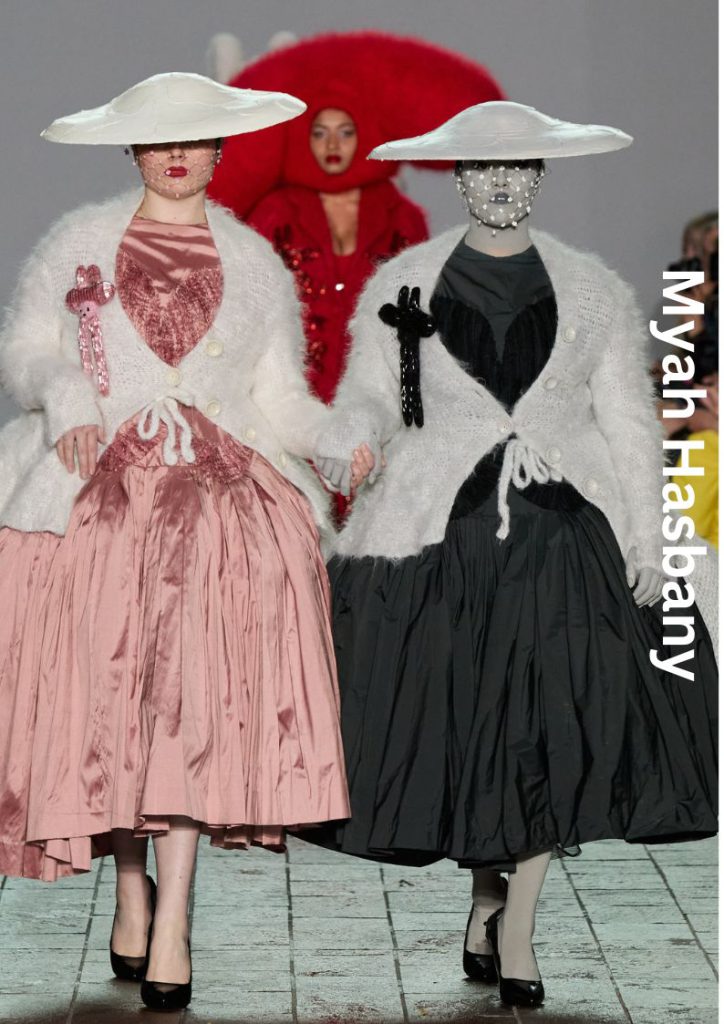
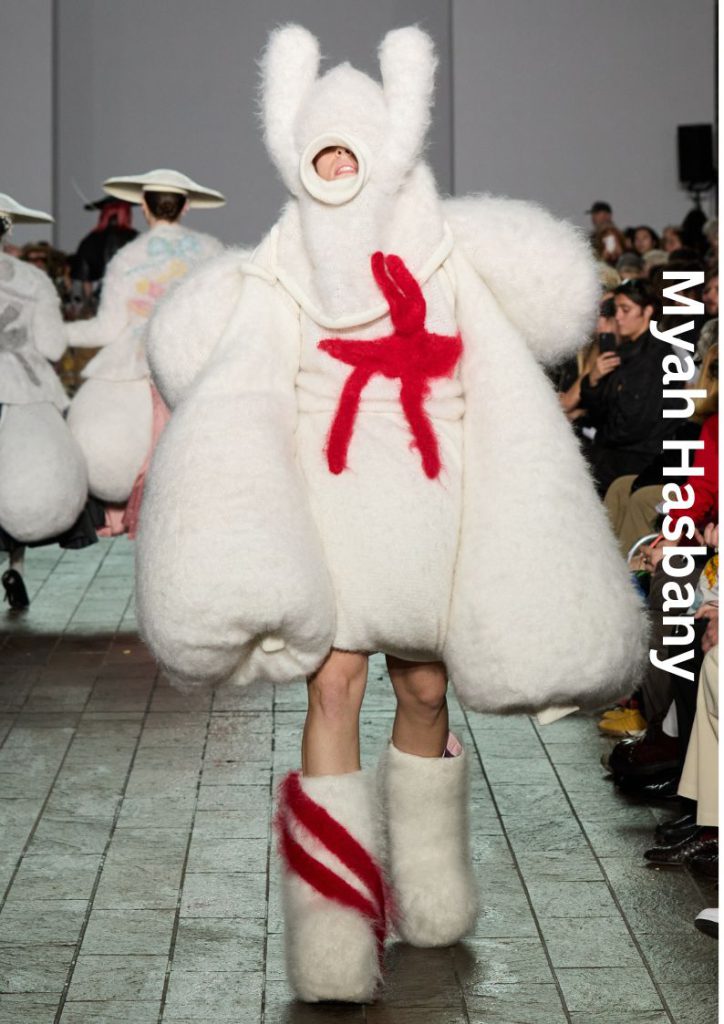
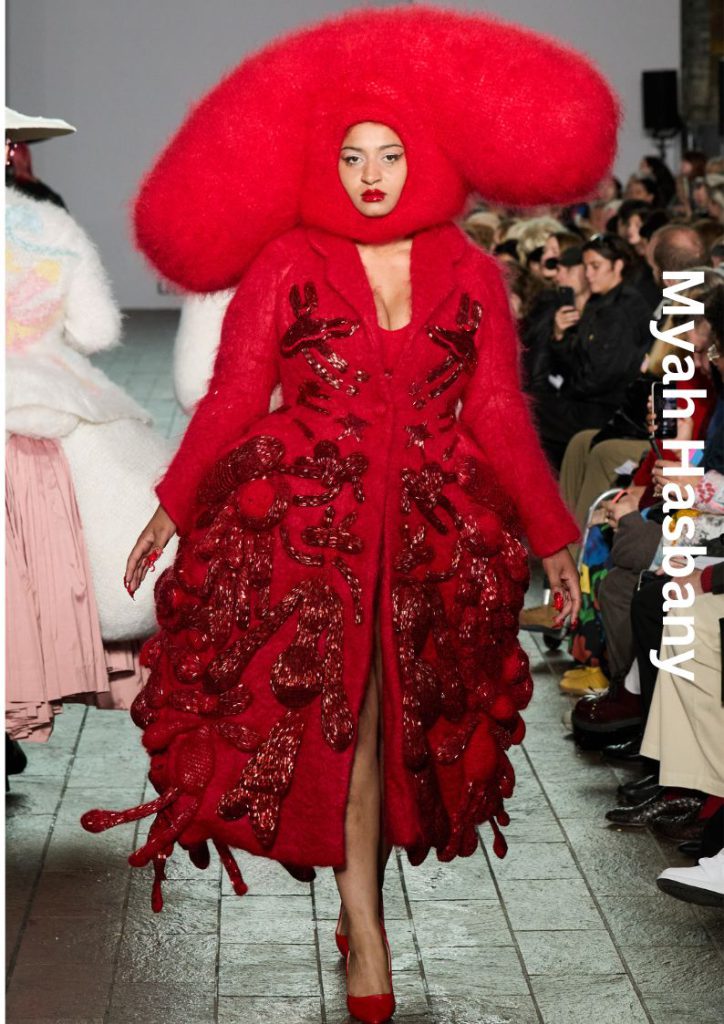
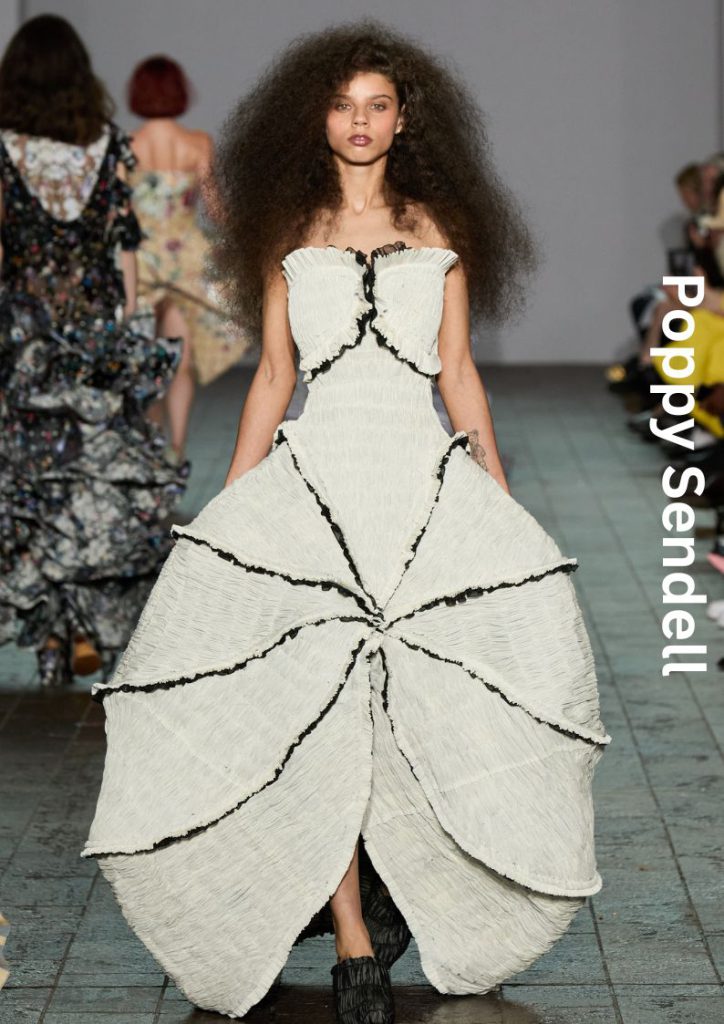
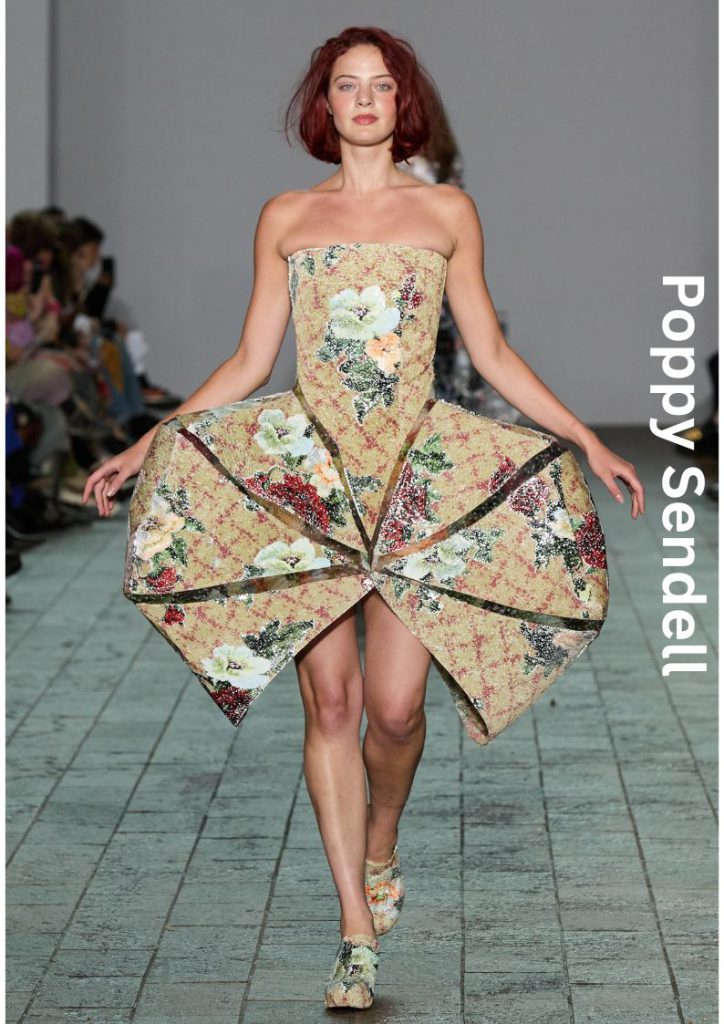
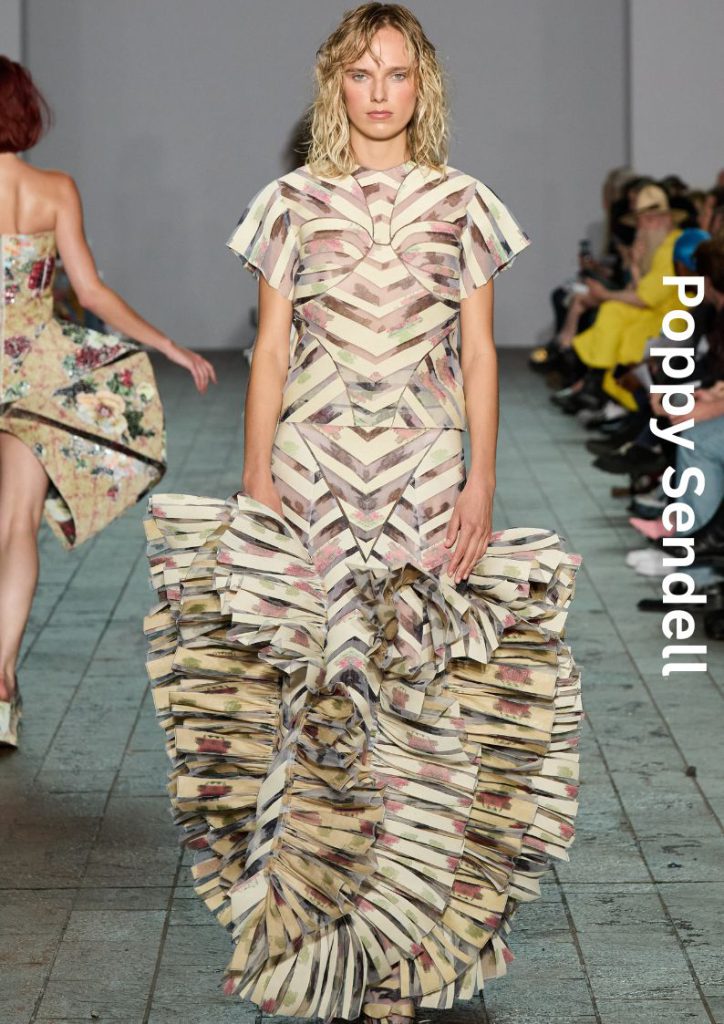
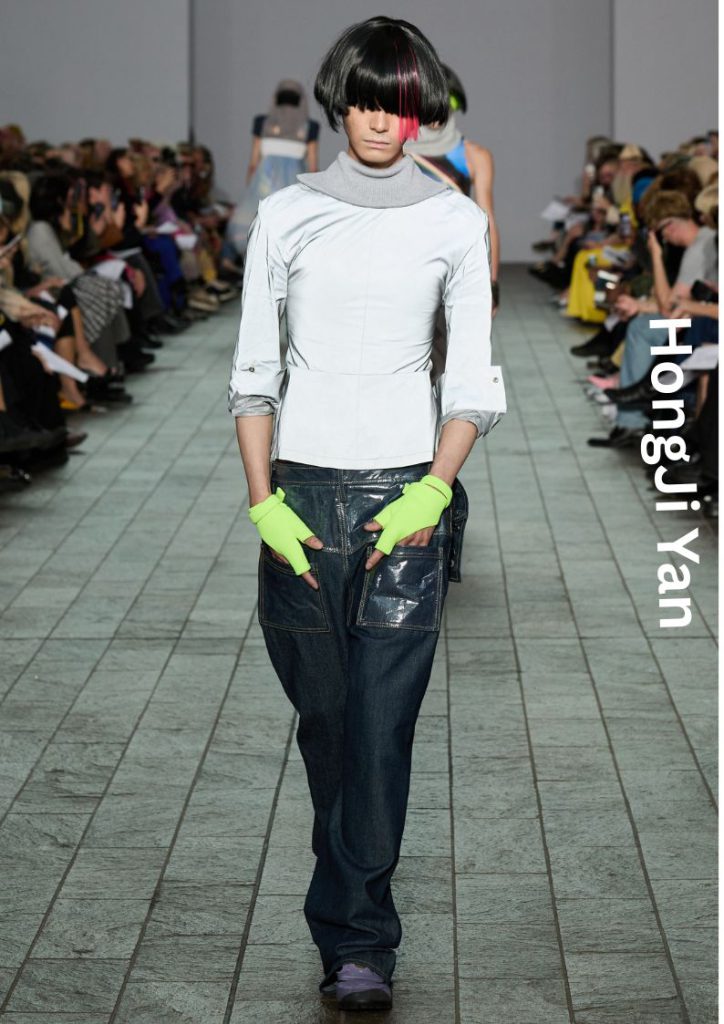
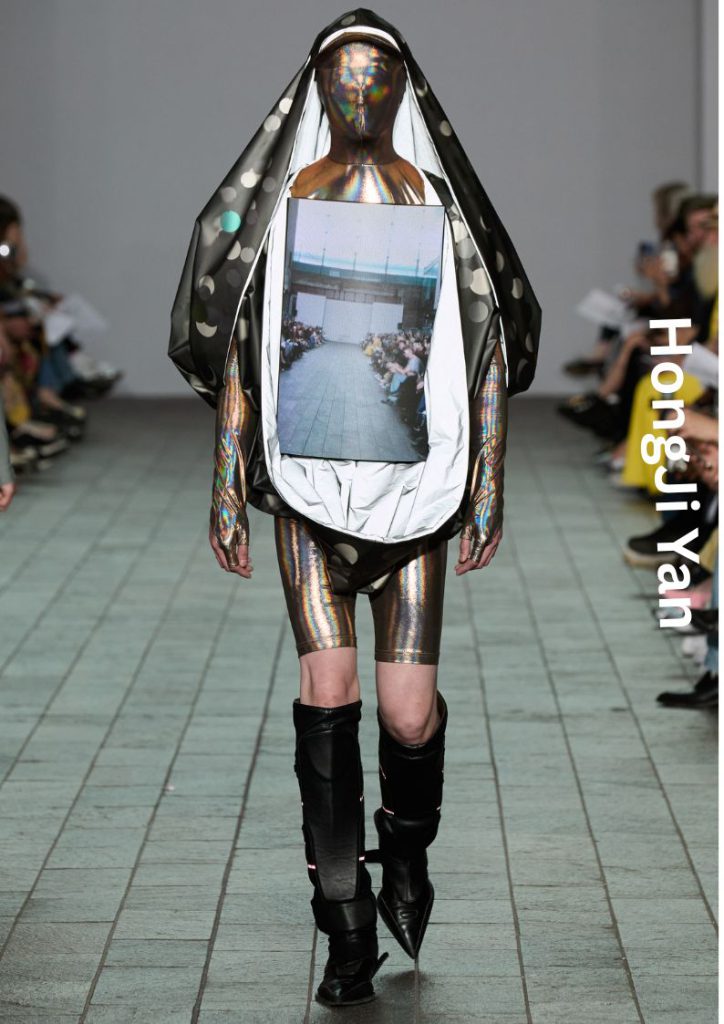
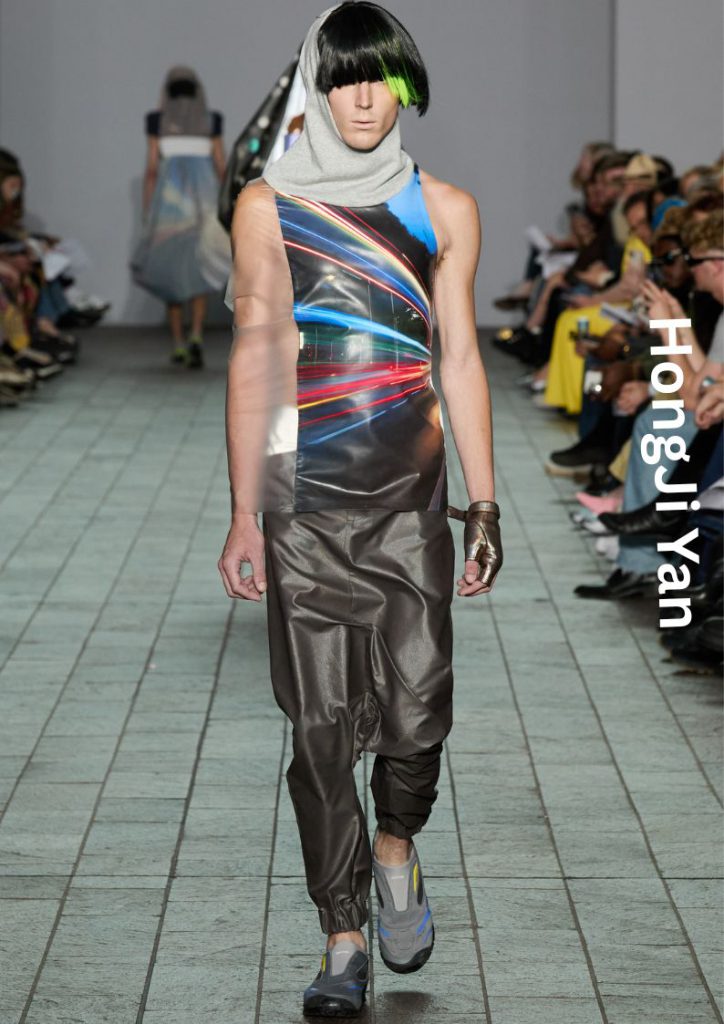
ZAINAB MANSARY: “You look like him. Don’t be like him.”
That’s what echoed in my ears the summer of 2024, while watching Now I See by Lane Malaolu – a piece about movement, Black masculinity, and forgiveness. His Reflection Is Blue. explores the legacy of my parents’ migration from Sierra Leone to south London in the late ’90s, shaped by civil war and survival. Starting with a family photo album, the collection reflects masculinity as seen through my mother’s eyes and my own longing to understand my father. It’s about identity, displacement, and the emotional residue carried through generations and across oceans.
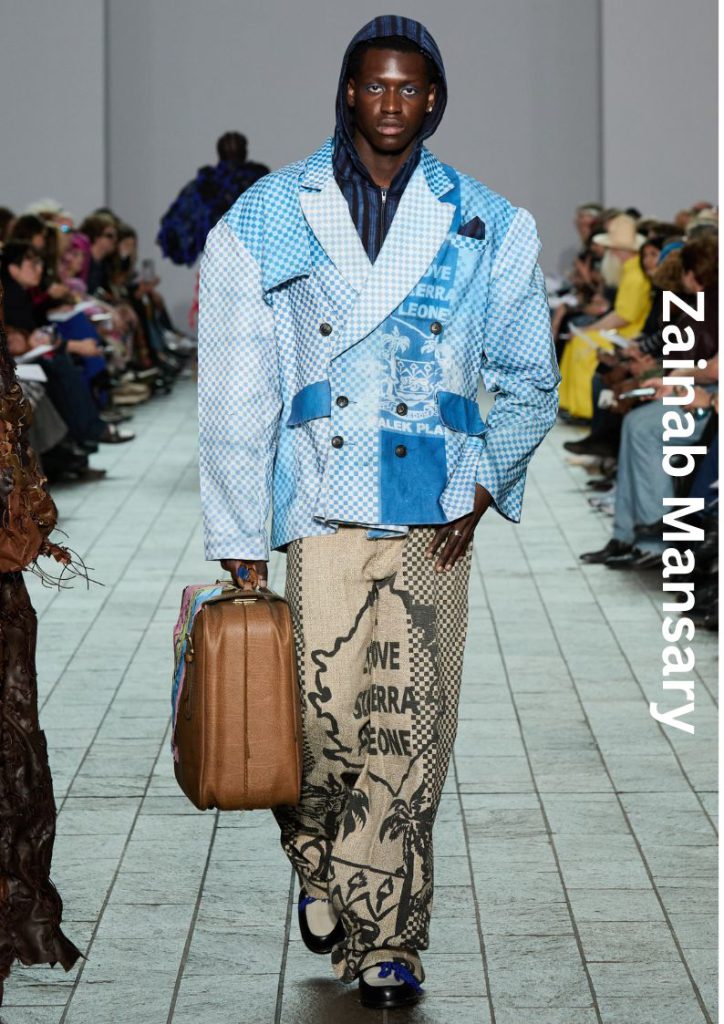
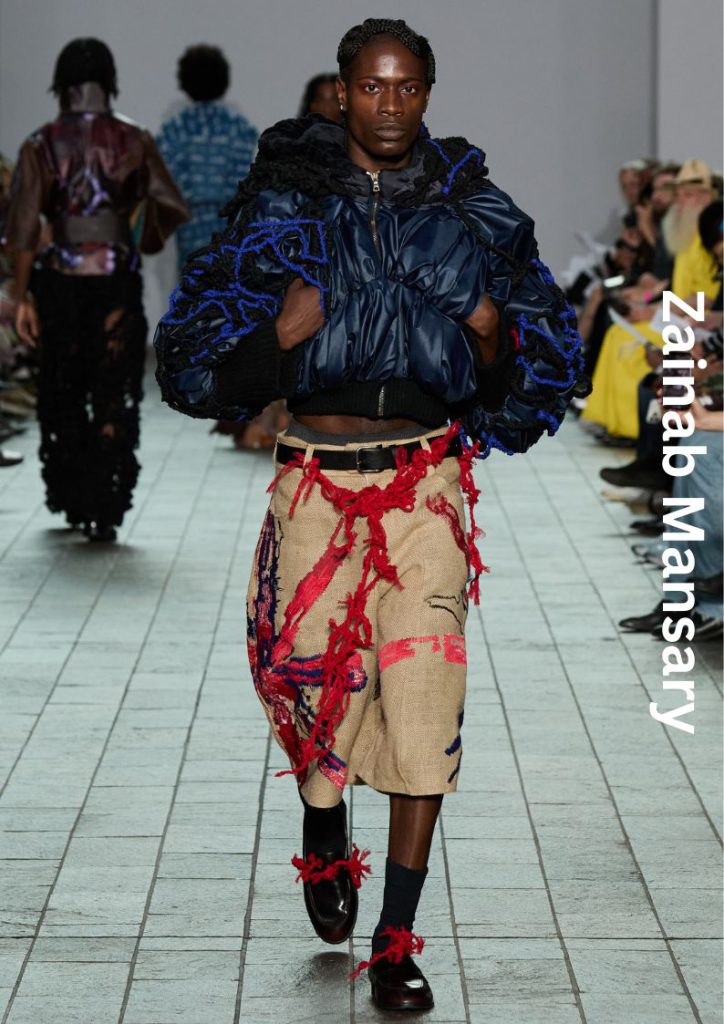
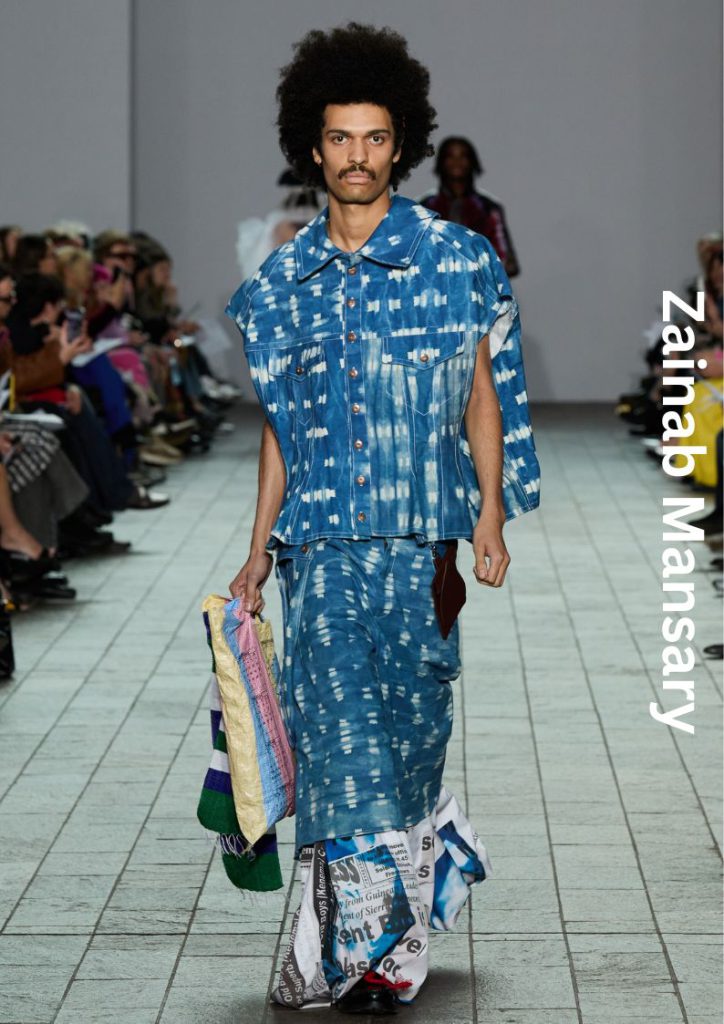
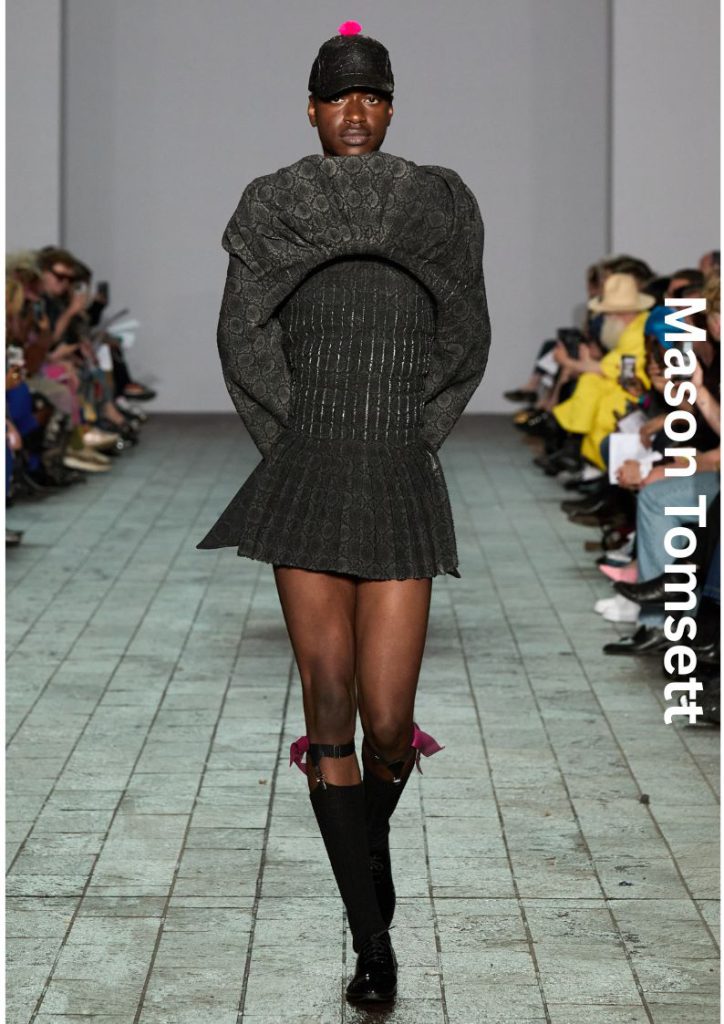
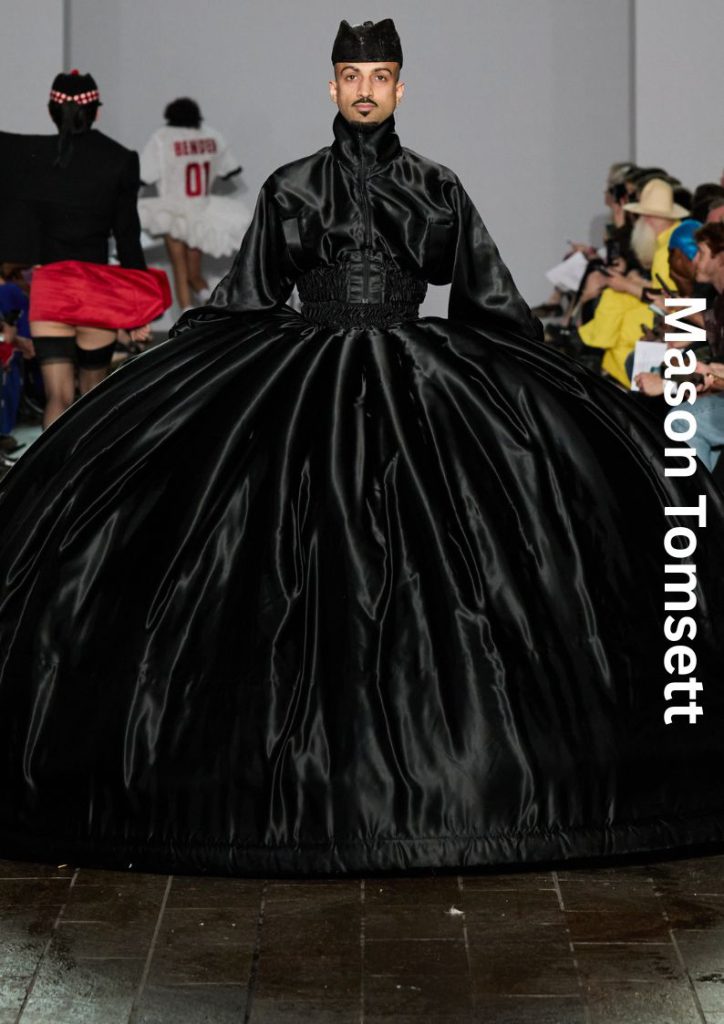
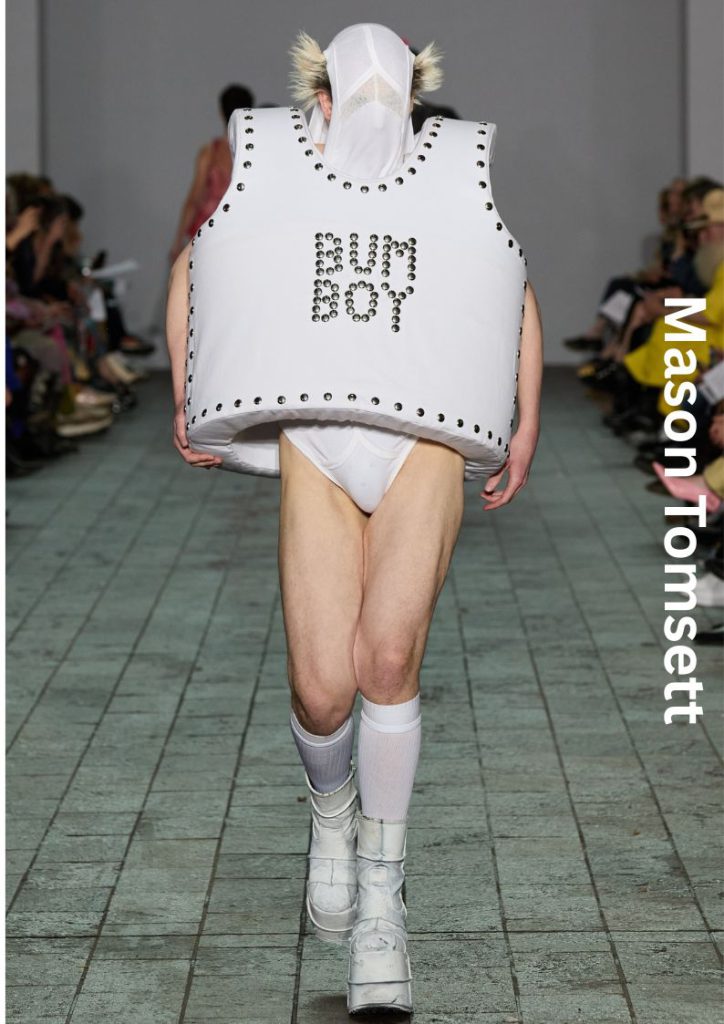
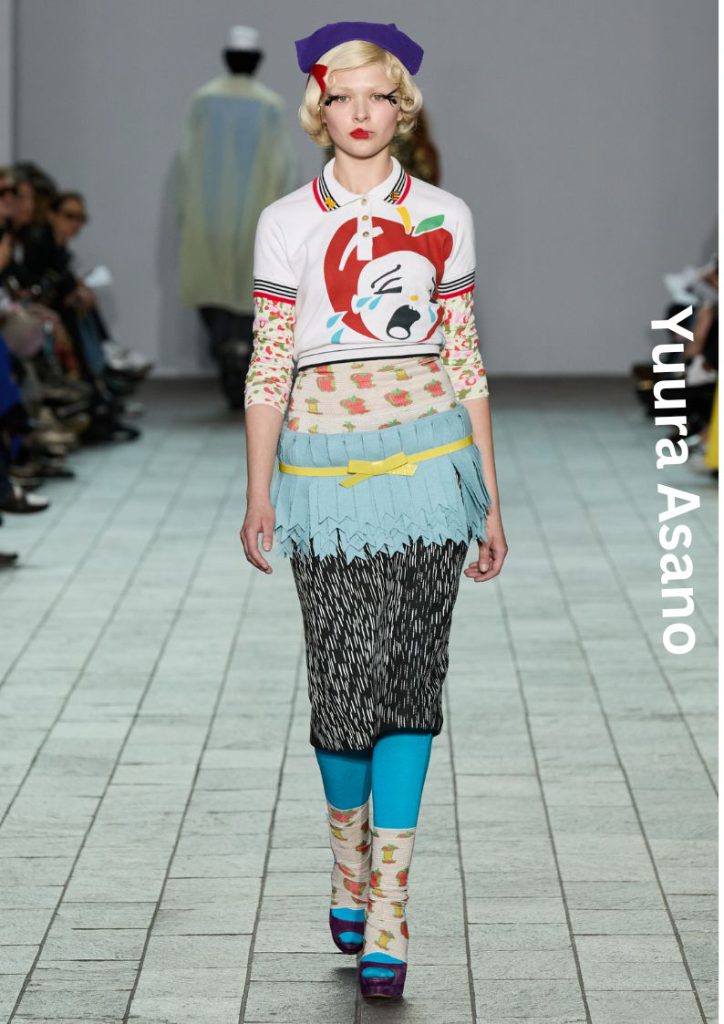
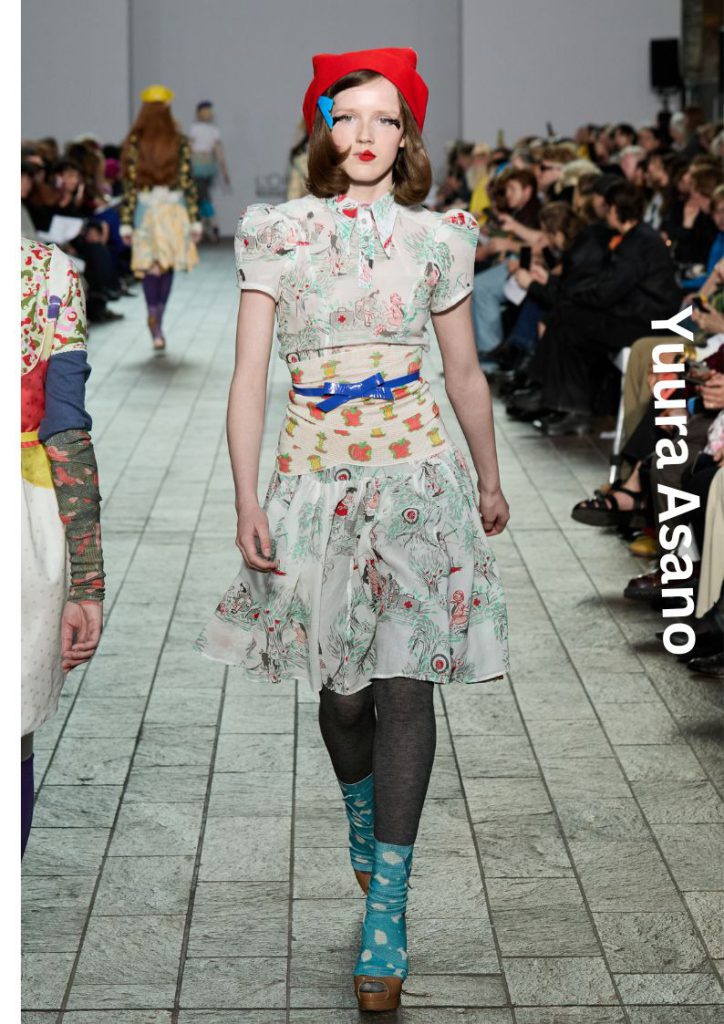
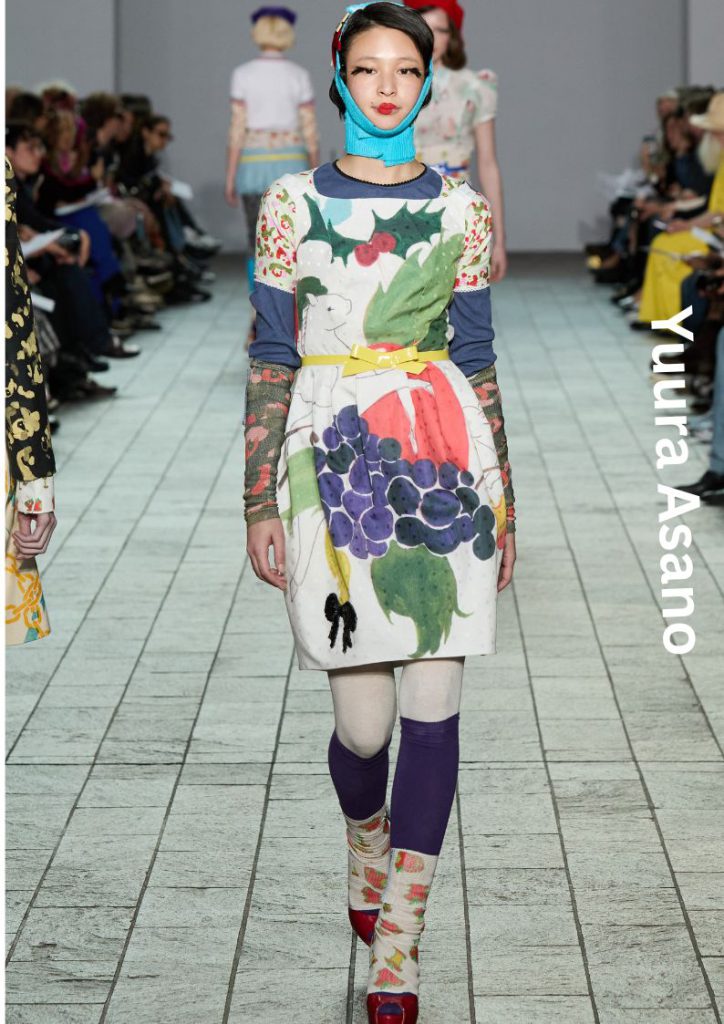
Timisola Shasanya: This collection is rooted in my personal migration narrative – an exploration of how movement shapes identity and how memory is preserved through material. I became interested in displacing context: taking the textures, weights, and emotional resonances of one place and reimagining them in another. Heidi Bucher’s “skinnings” had a deep influence on me. I researched my childhood environments in London and Lagos and travelled to Kano in Northern Nigeria to collect tactile materials. Through fabric manipulation, weaving, hand-dyeing, and unconventional materials, I translated the psychological and sensory experience of migration into garments – each piece a vessel for memory.
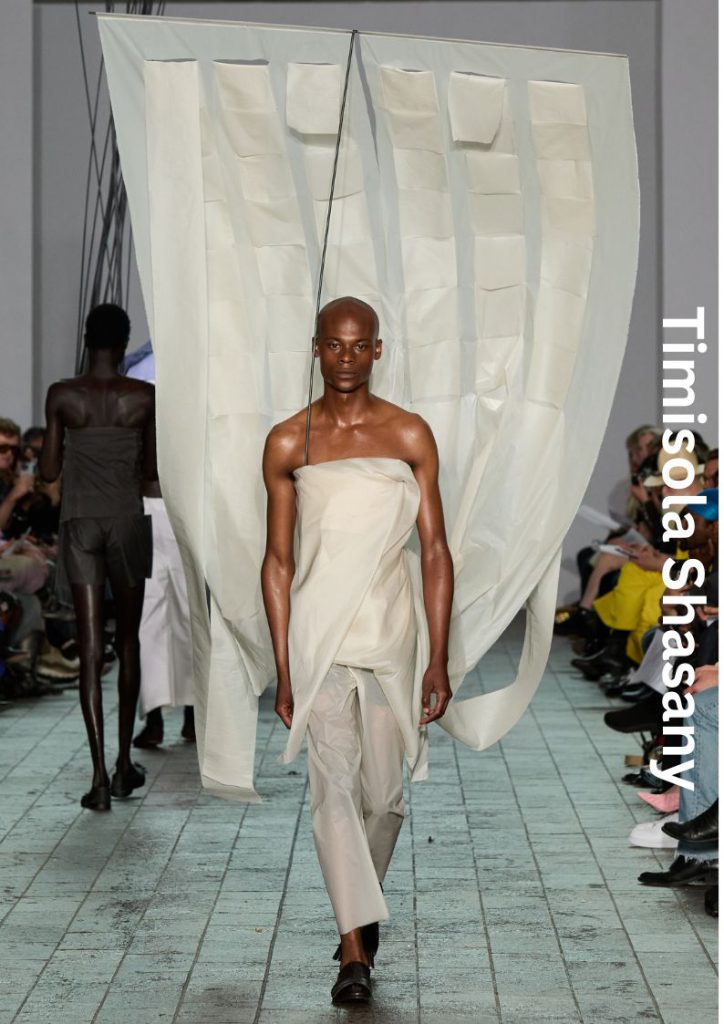
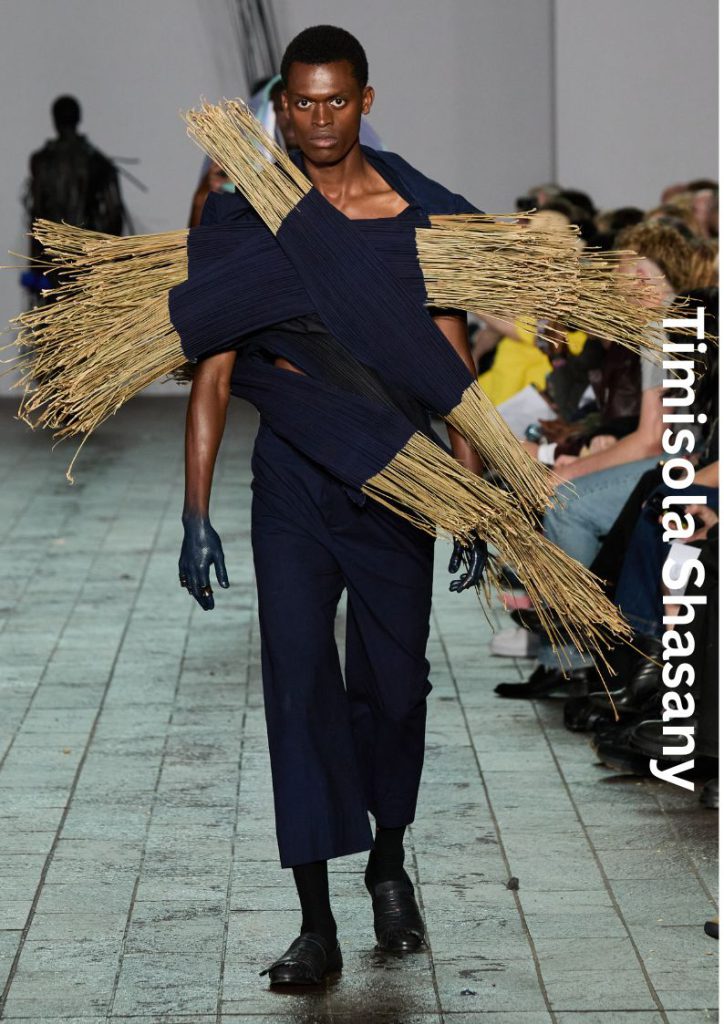
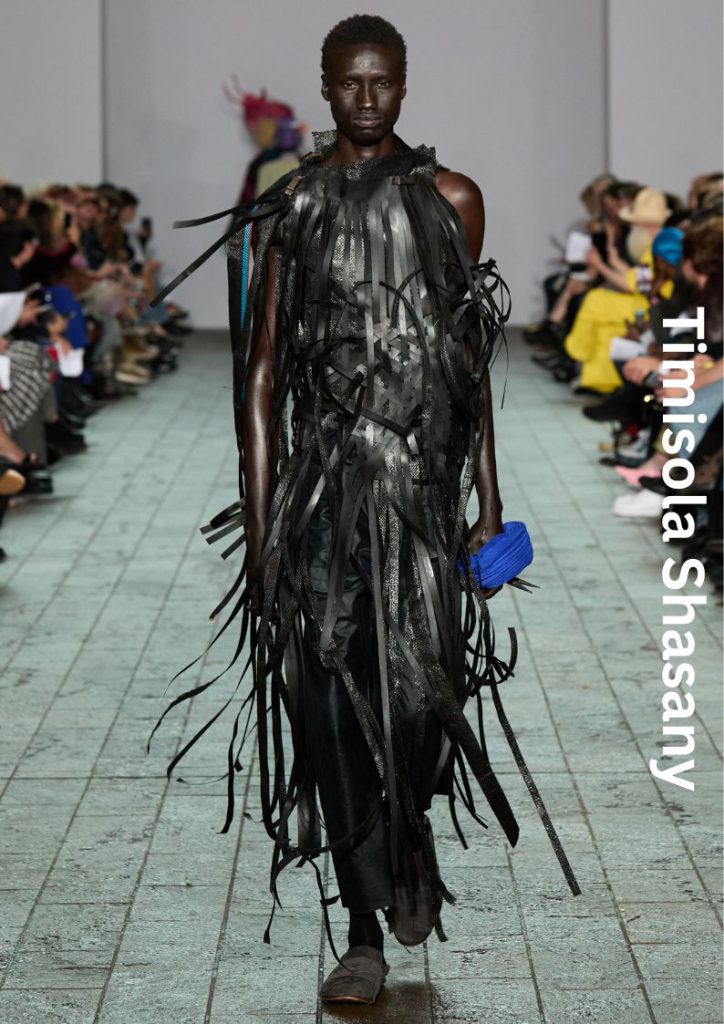
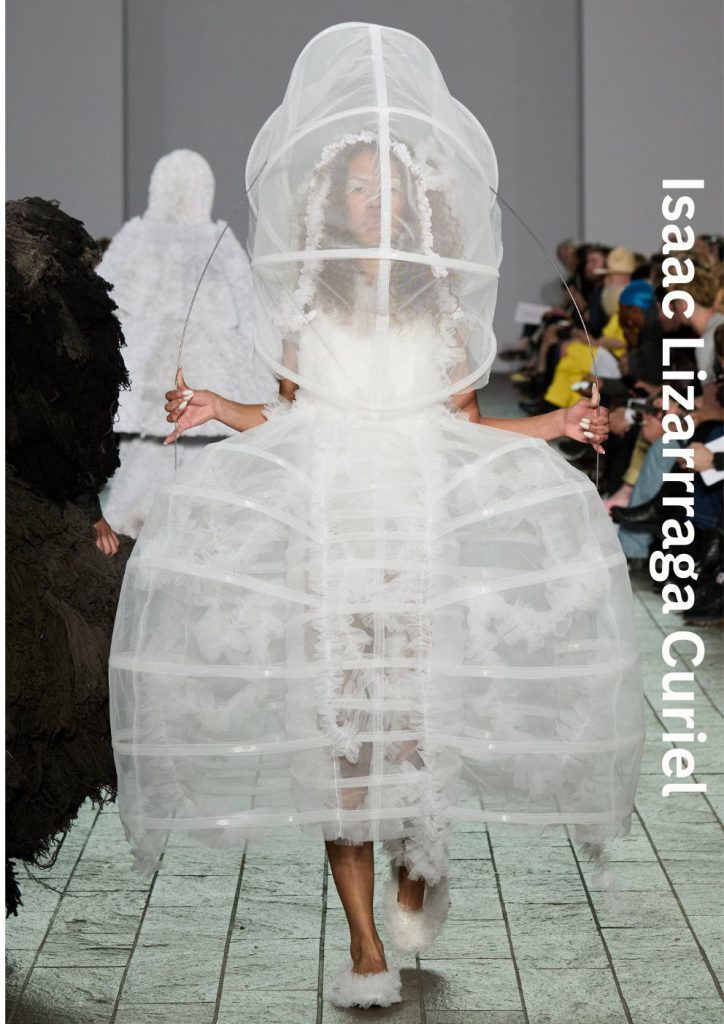
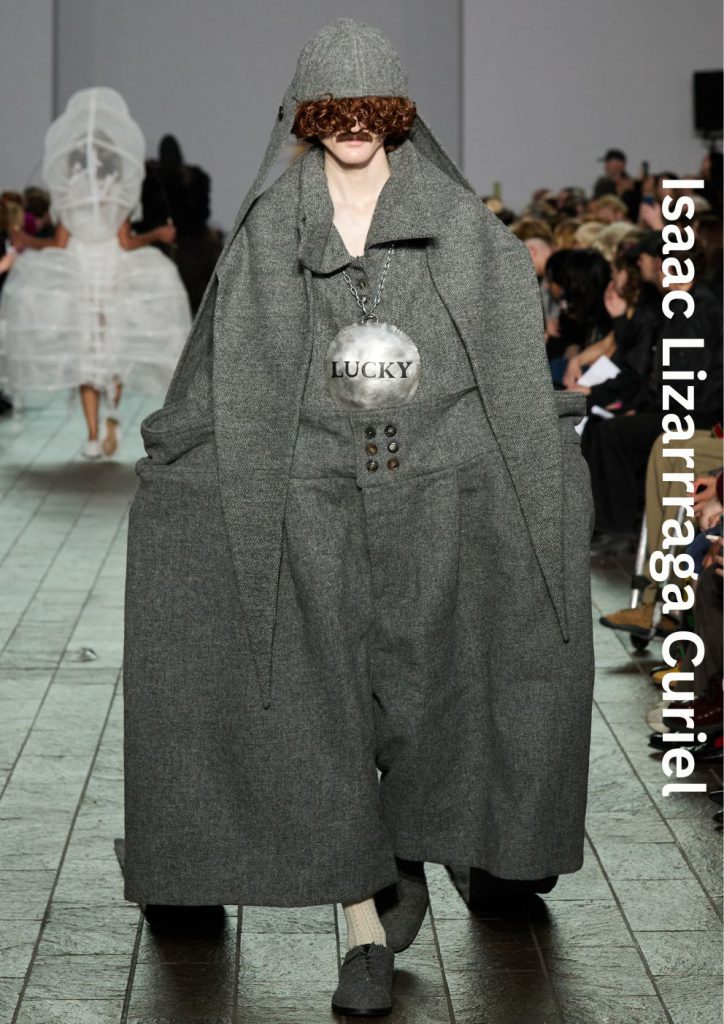
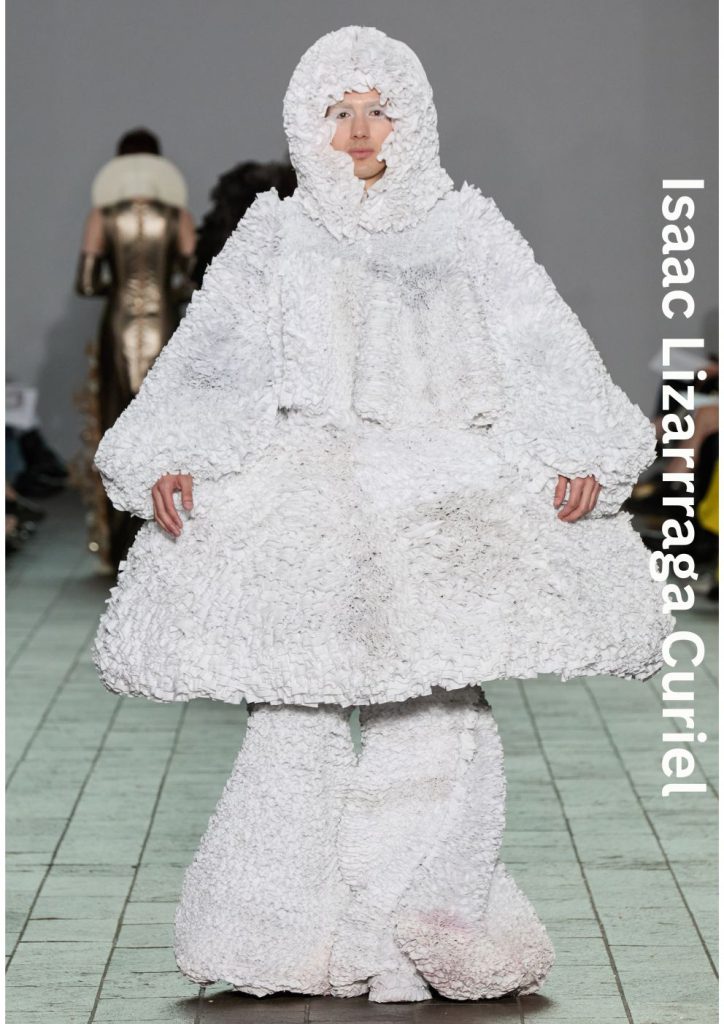
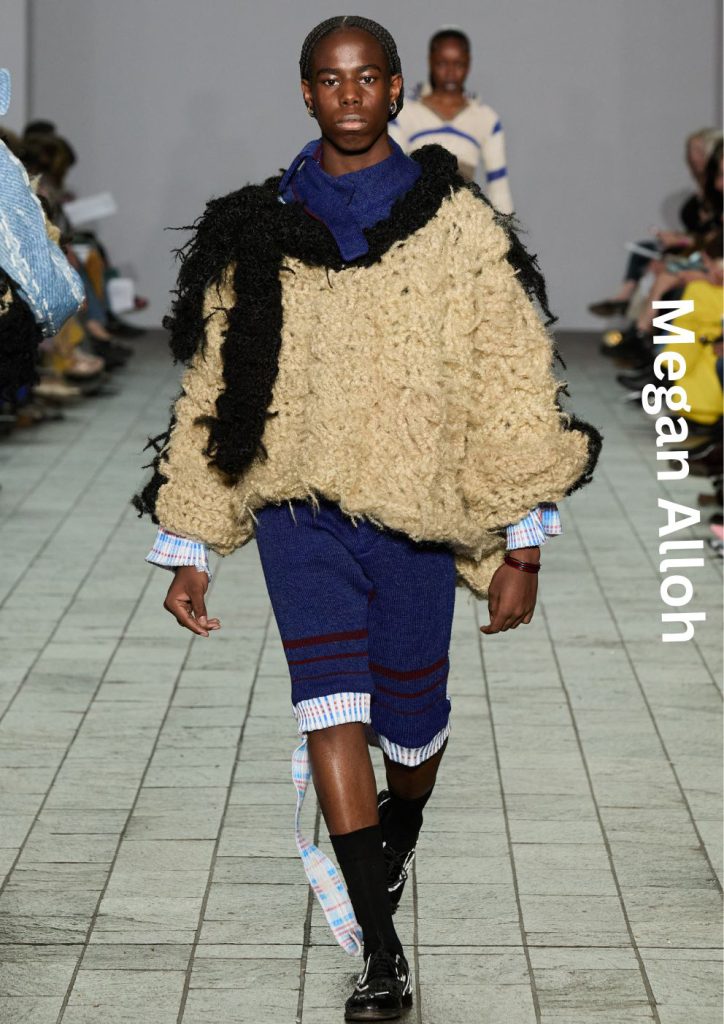
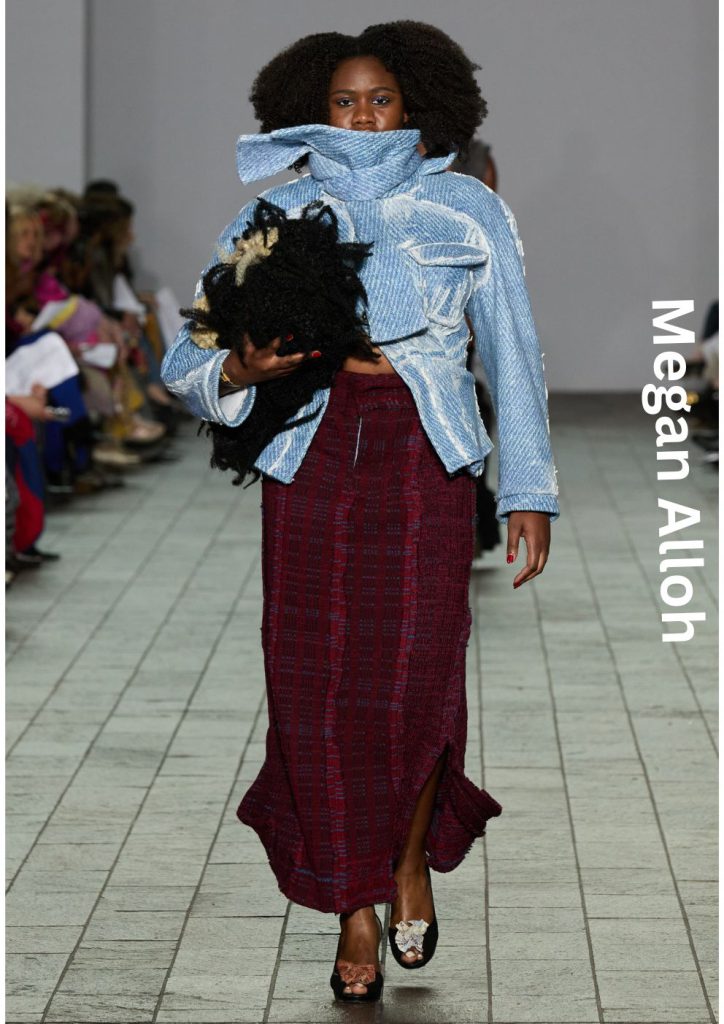
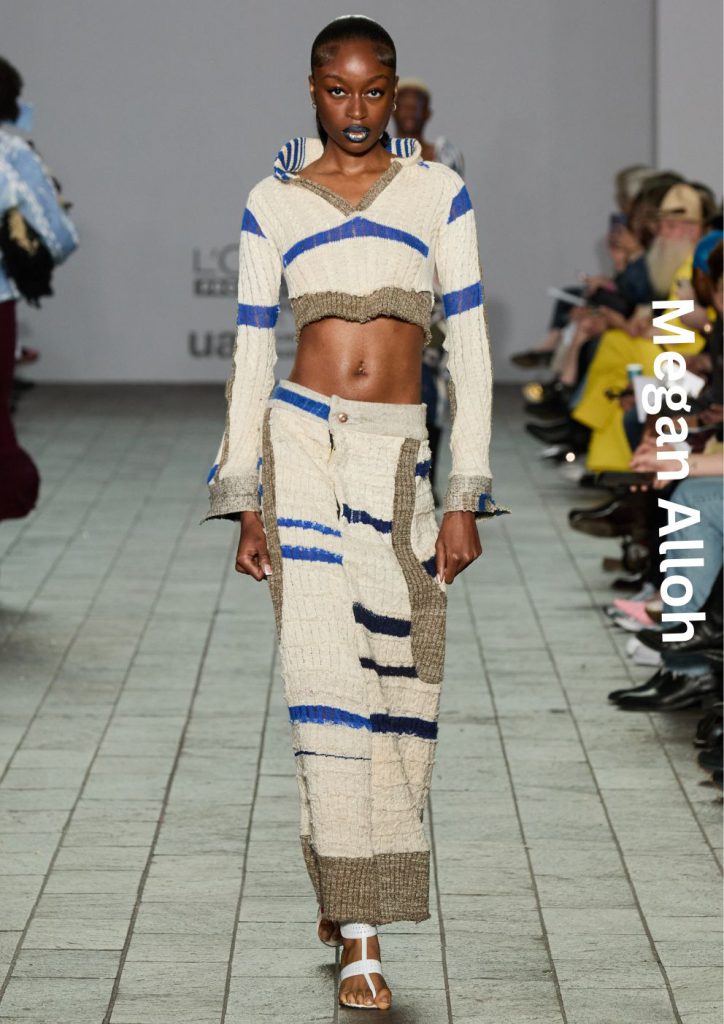
SAM FISHER: No Drink On The Dancefloor is a tribute to my relationship with dance and how it shaped me as a young man. Inspired by Northern Soul nights and my background in contemporary dance, the collection explores expression through the body, exposure, and the freedom found in movement. I was especially drawn to the way these spaces allowed young men to take up space – physically and emotionally – without inhibition. That energy feeds directly into the garments, which are designed to shift, sculpt, and distort as the body moves, capturing the dynamic rhythm of dance itself.
